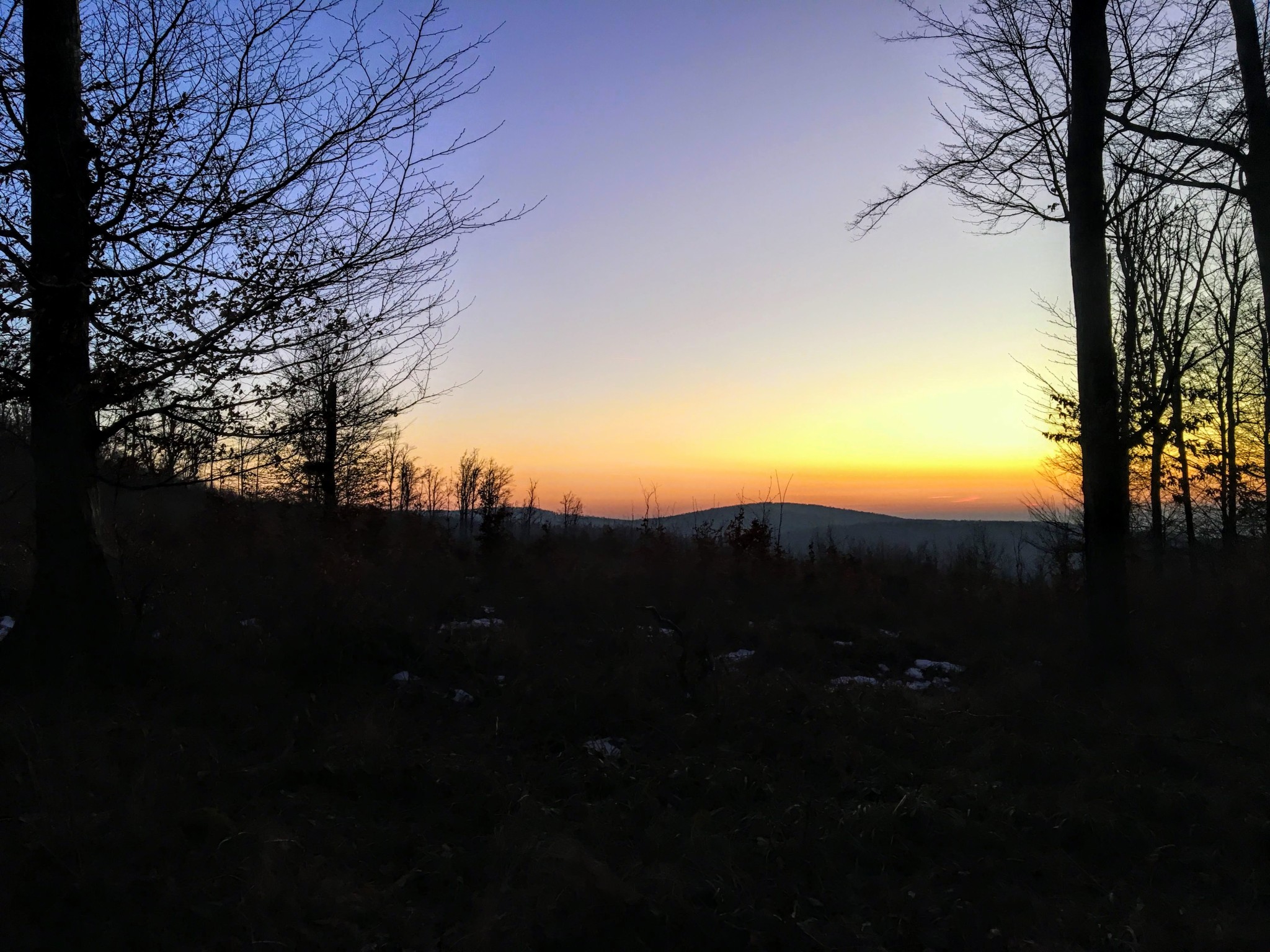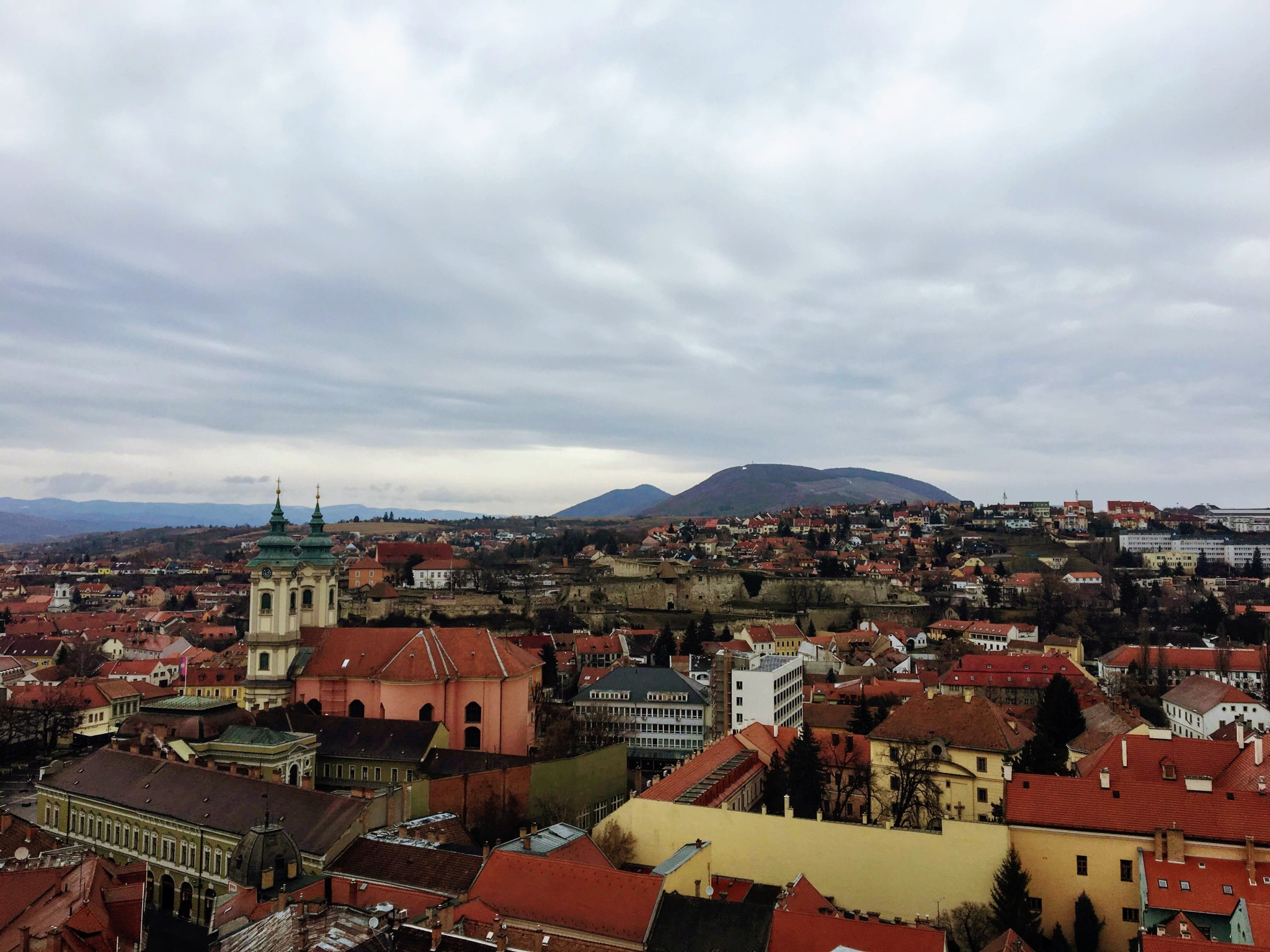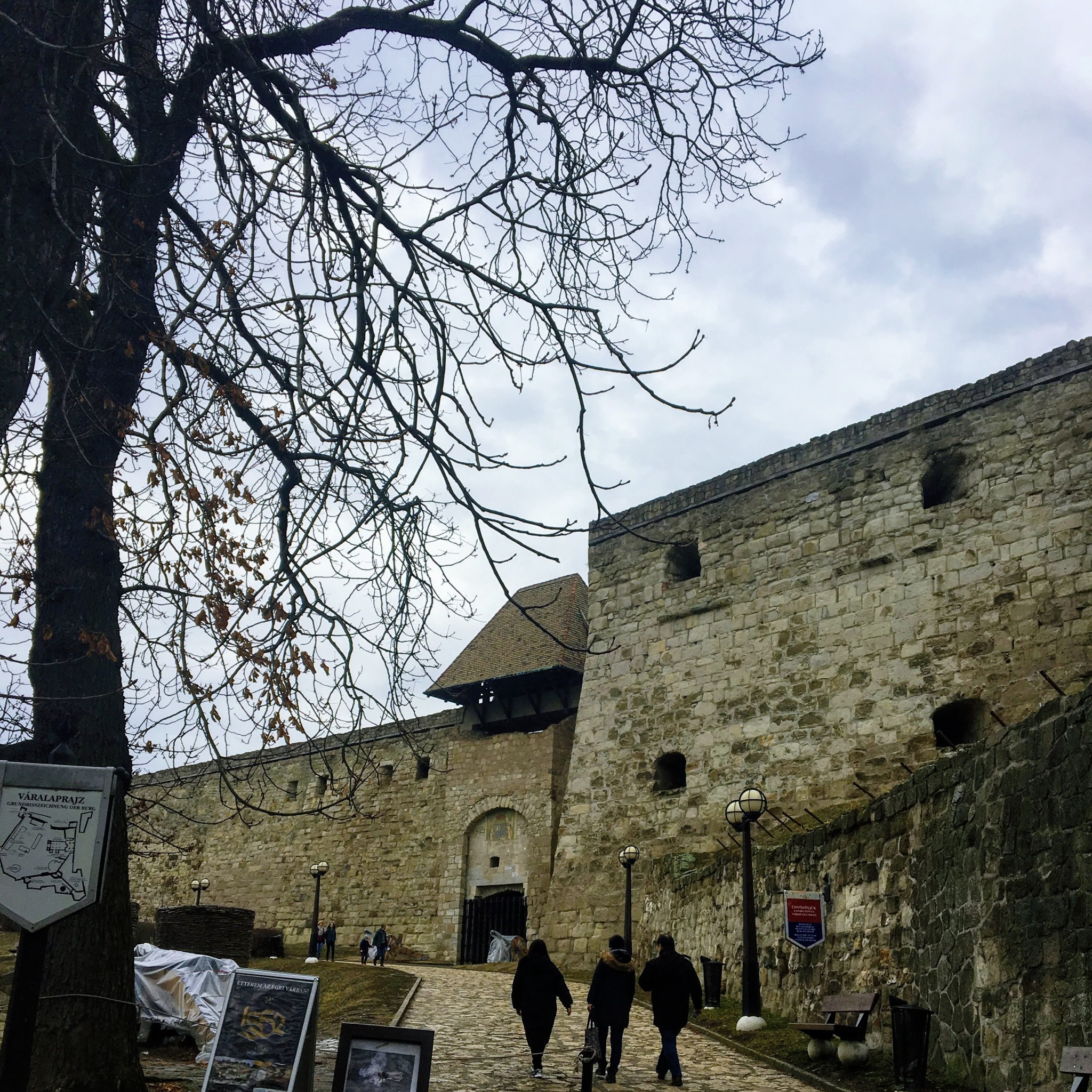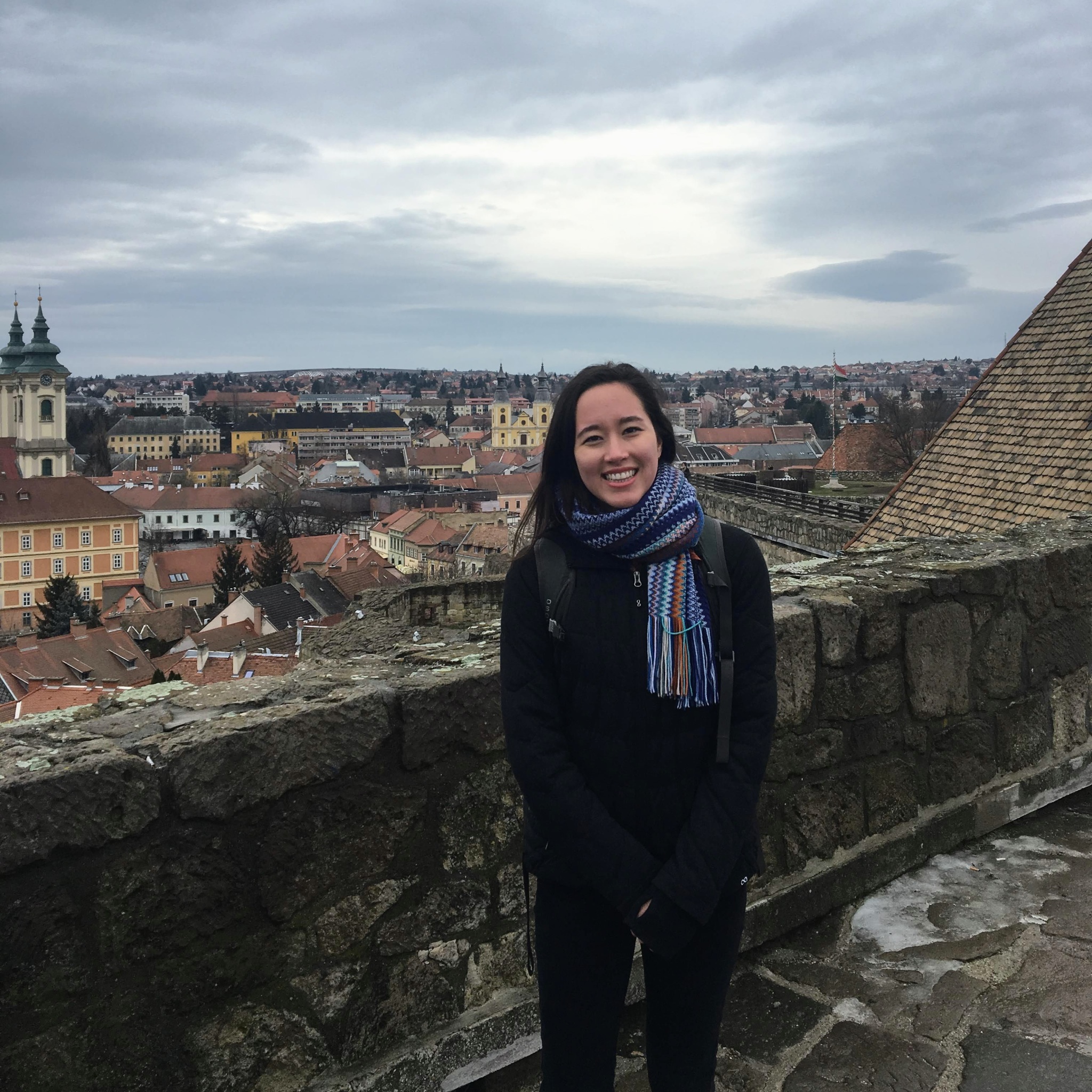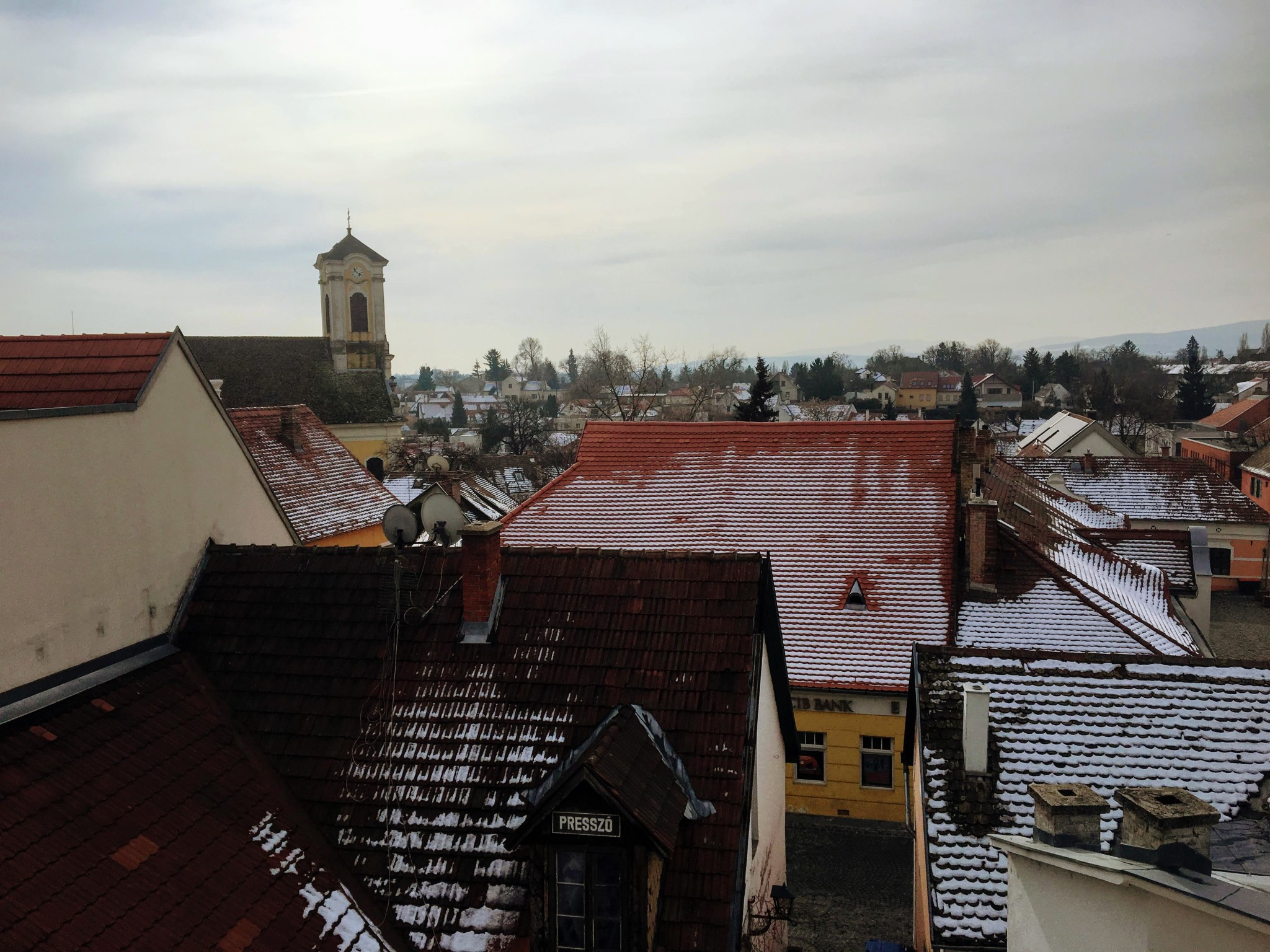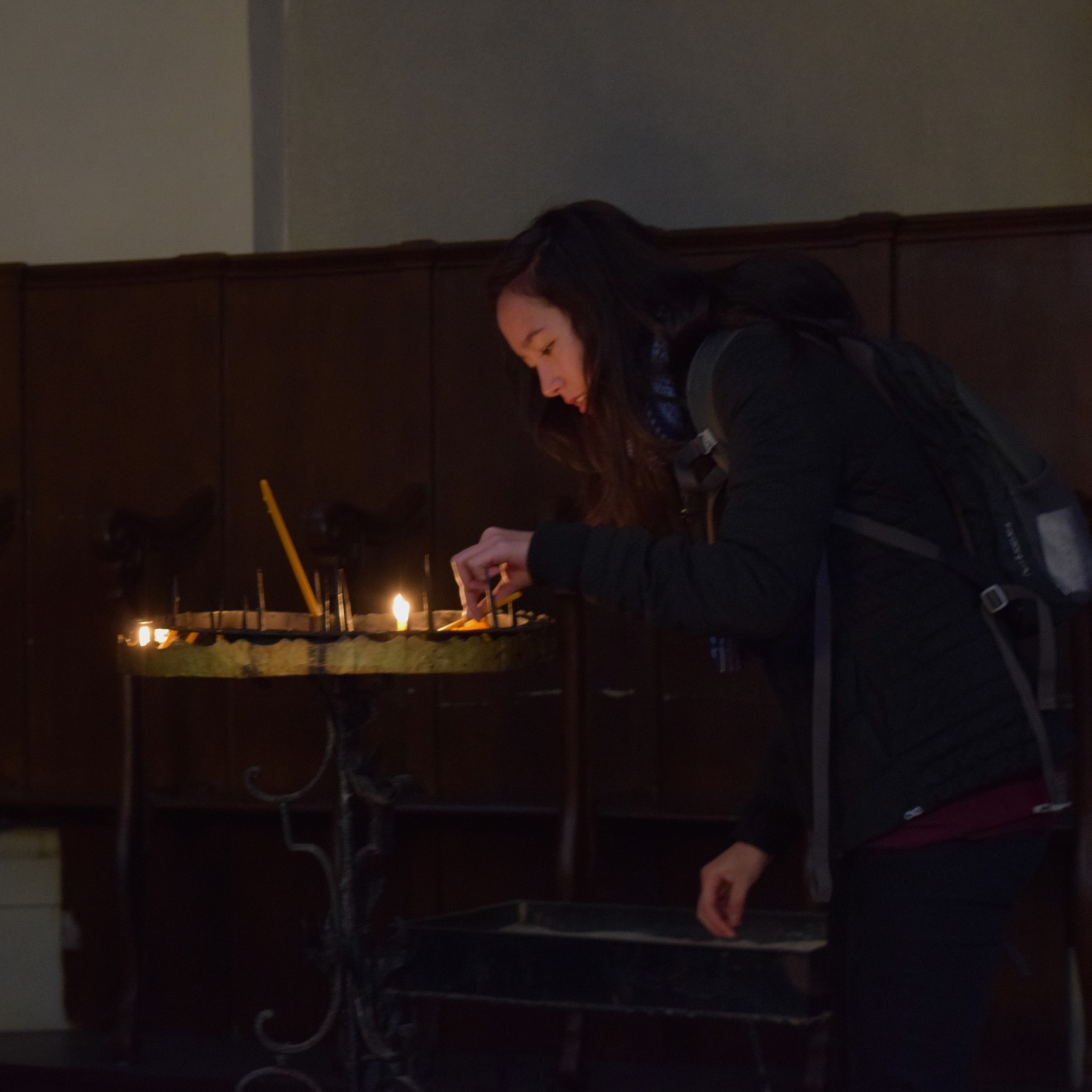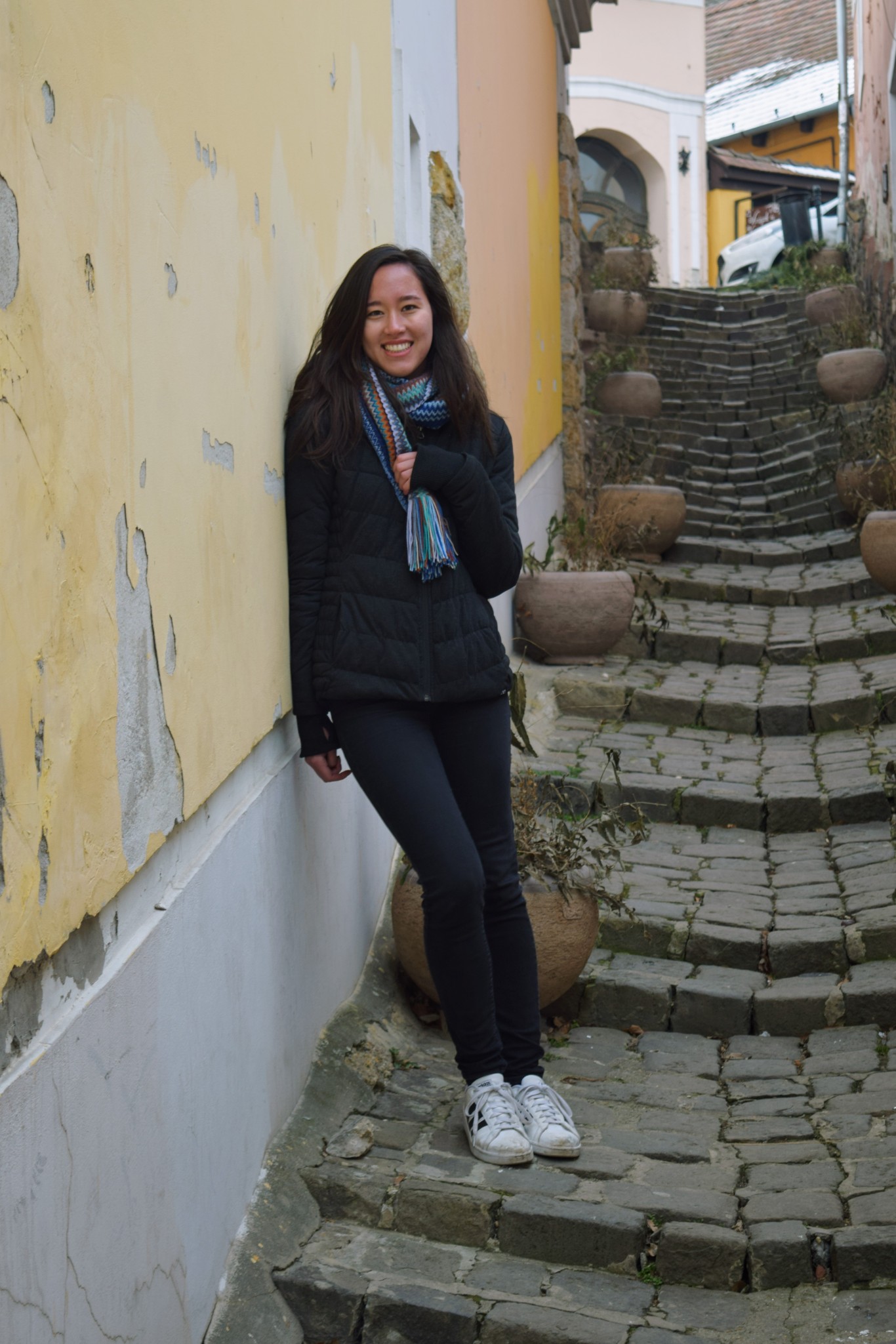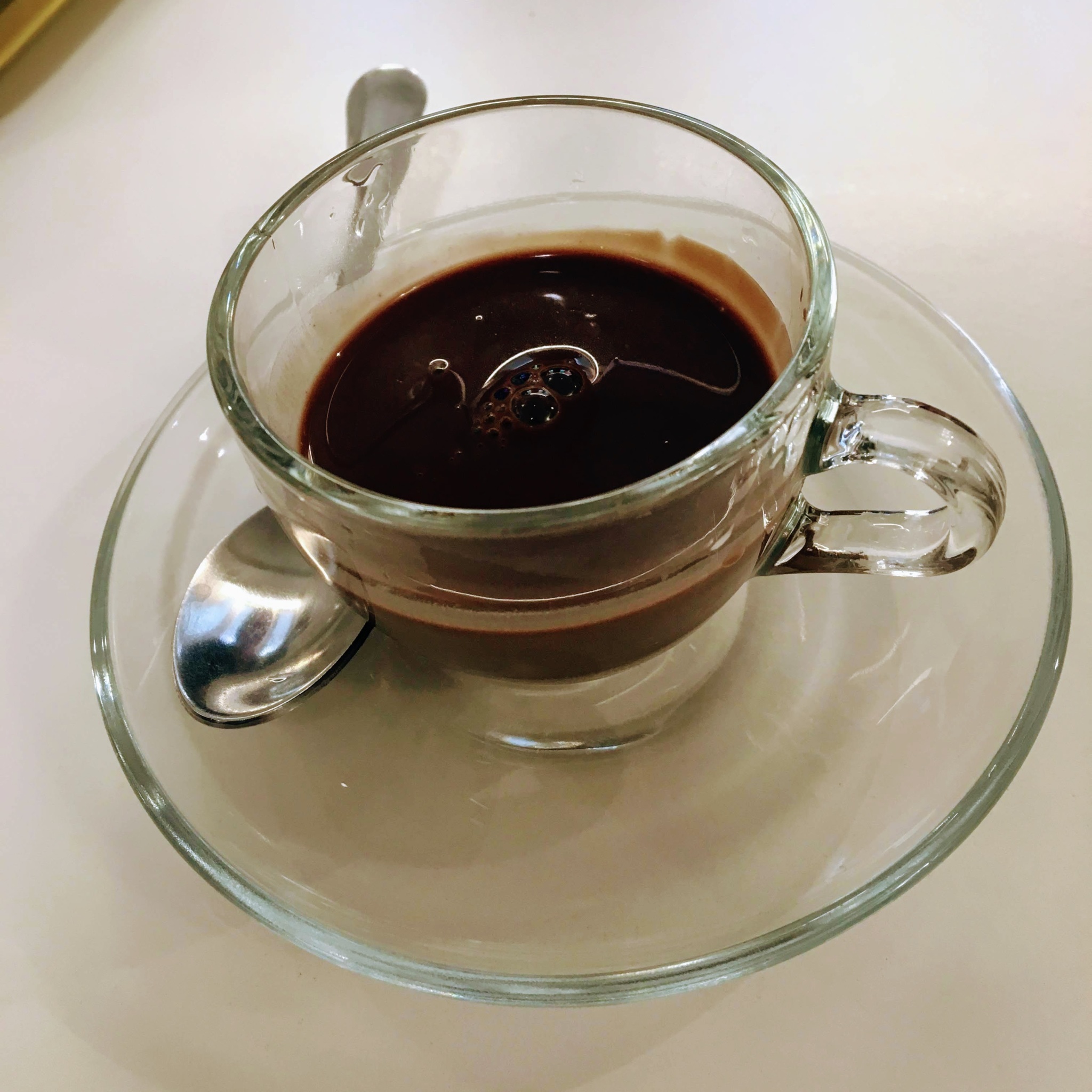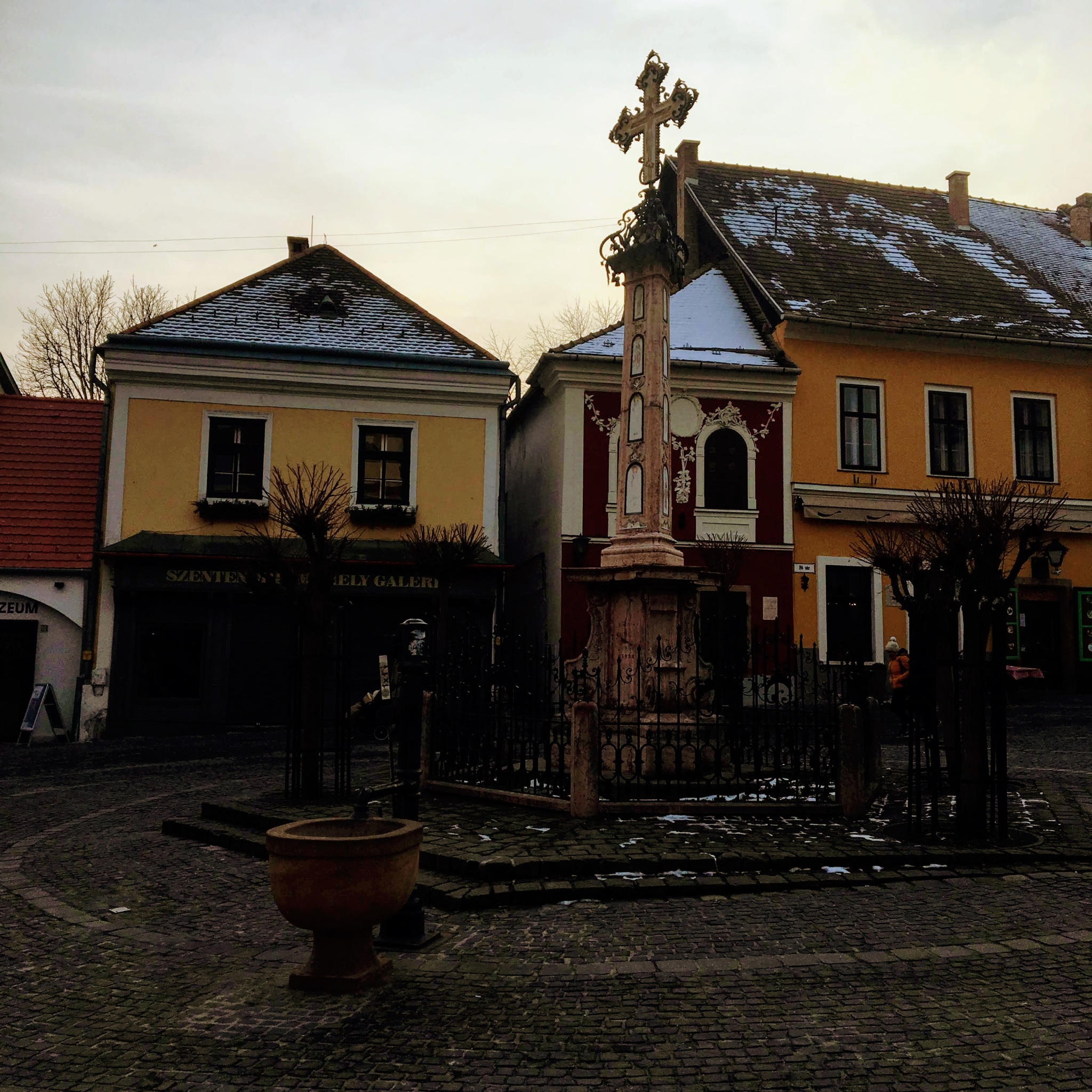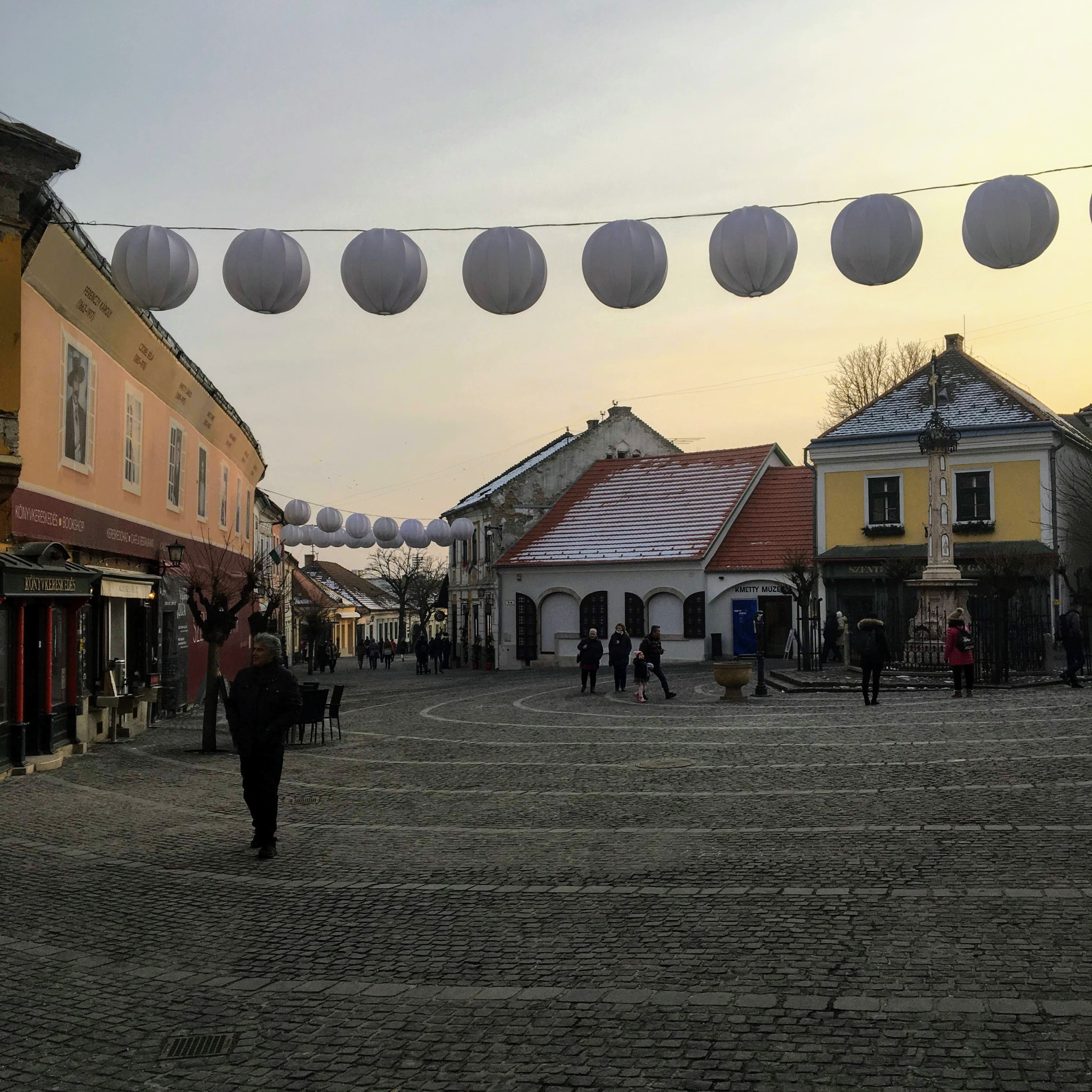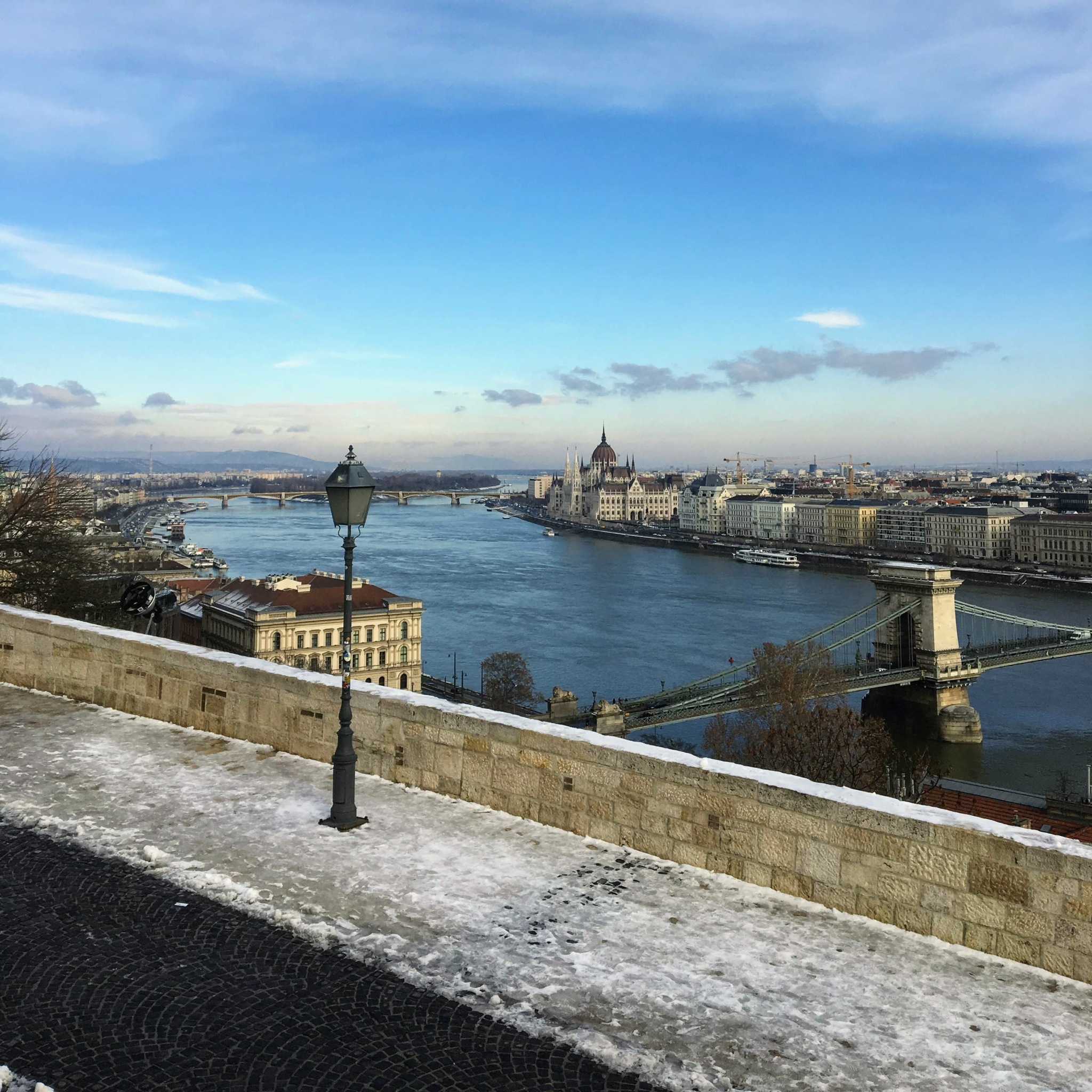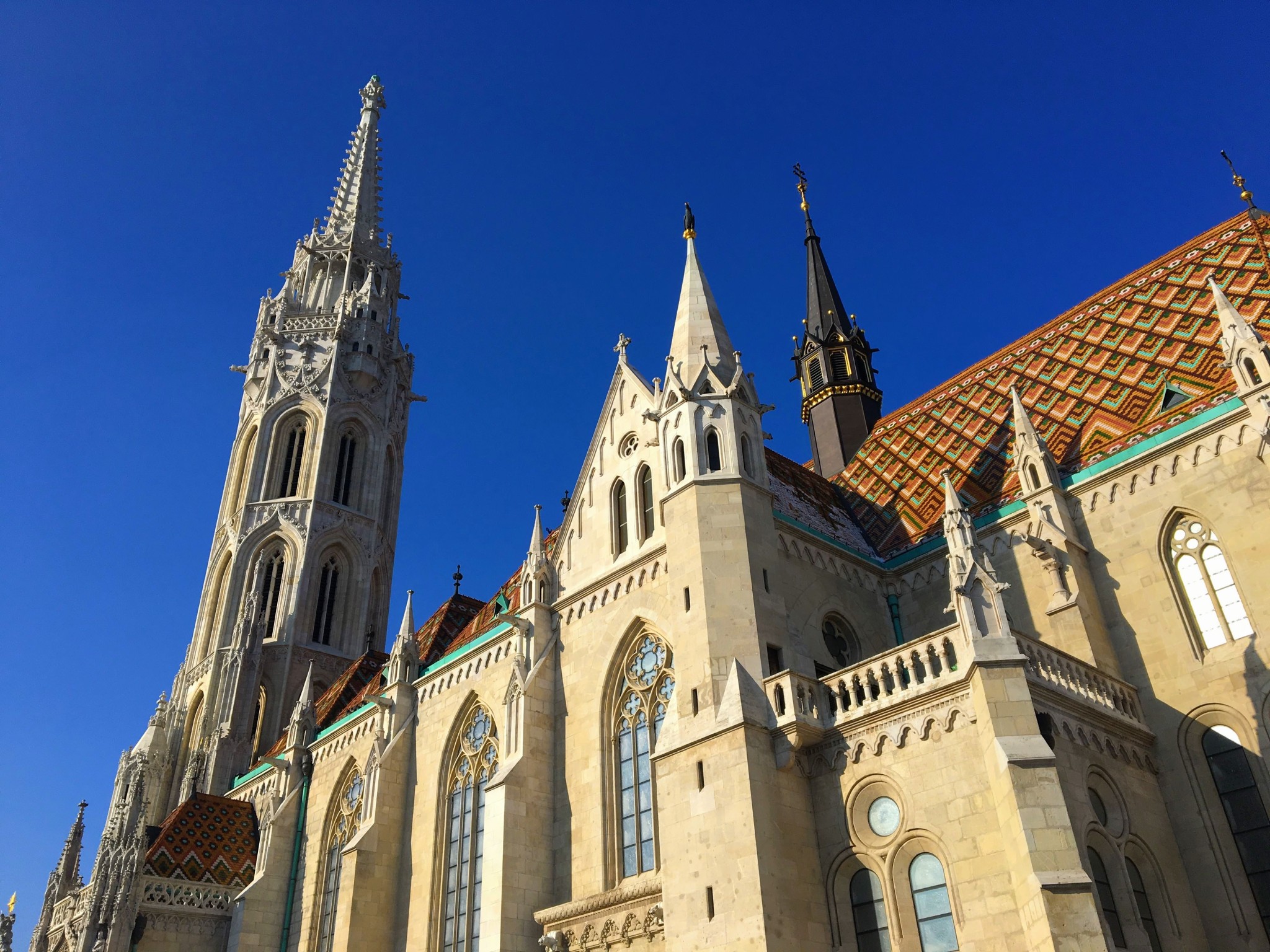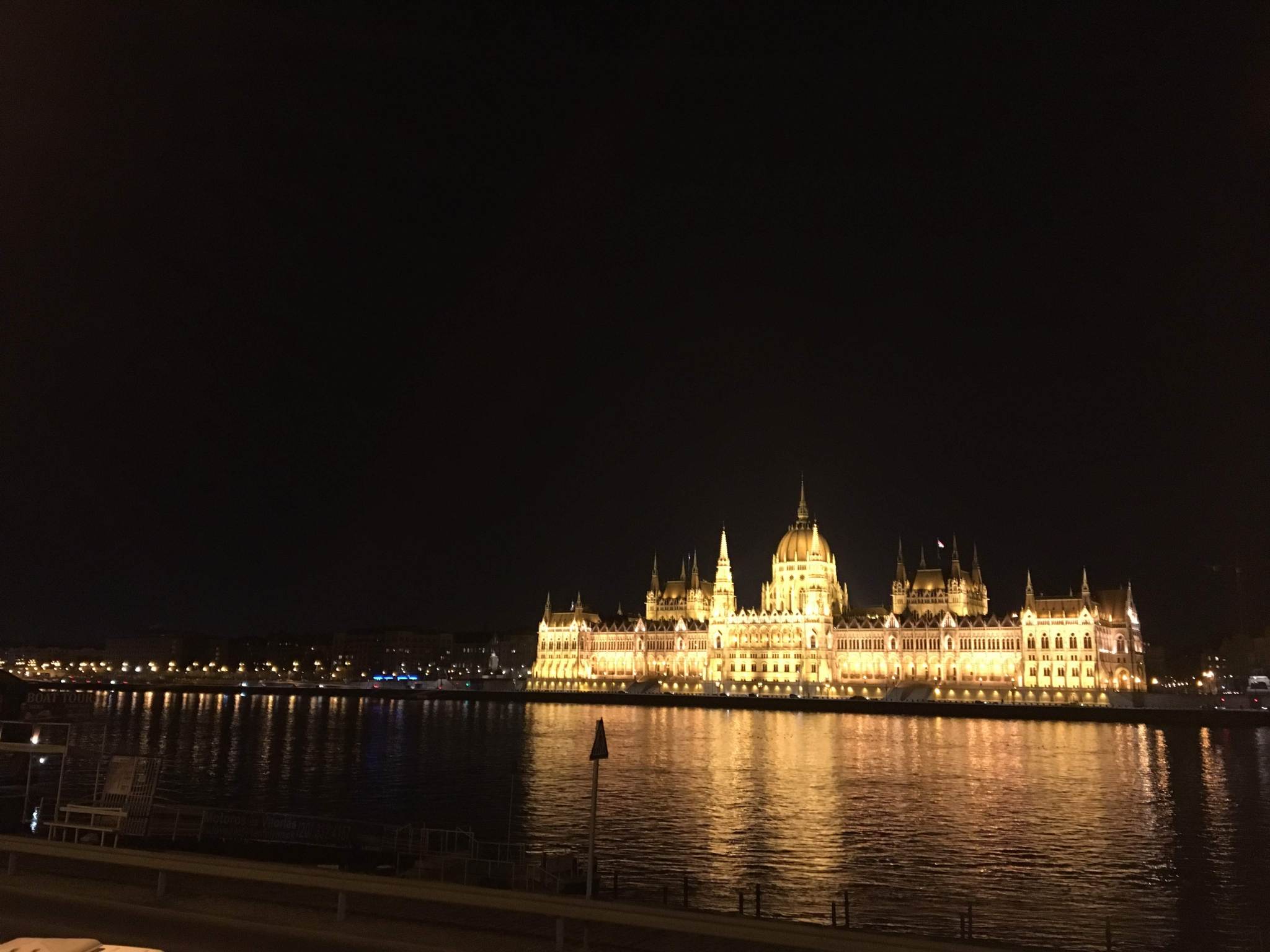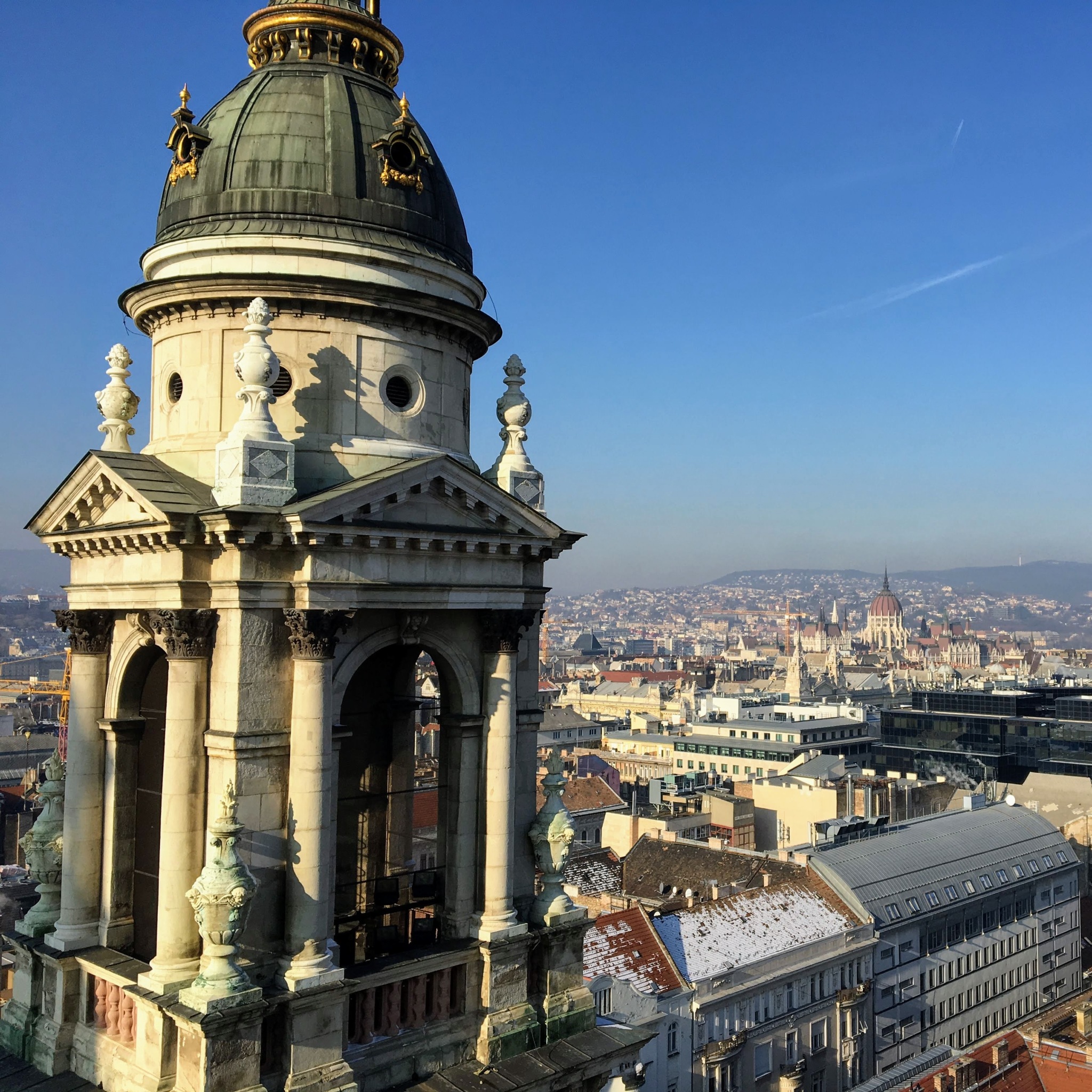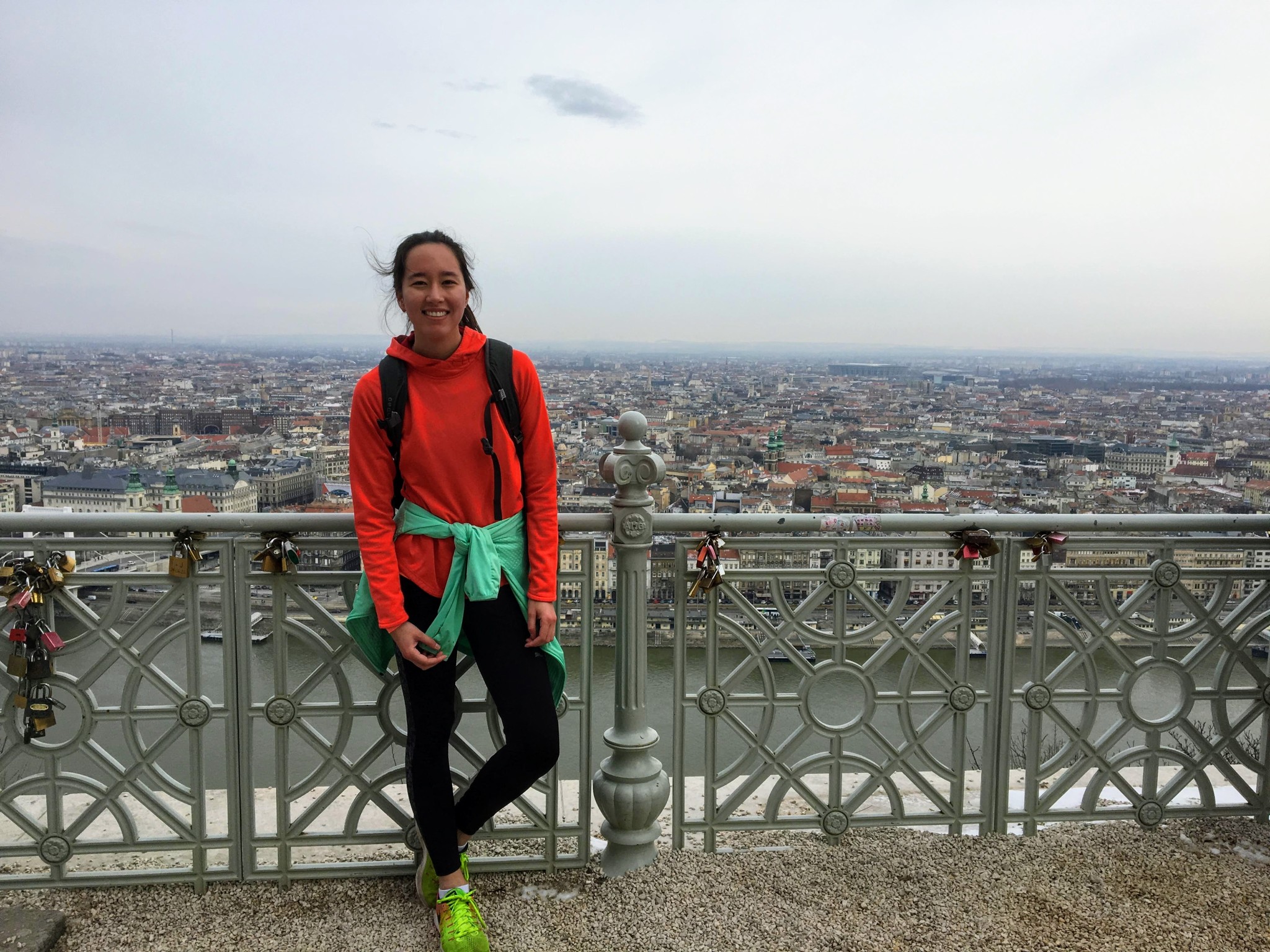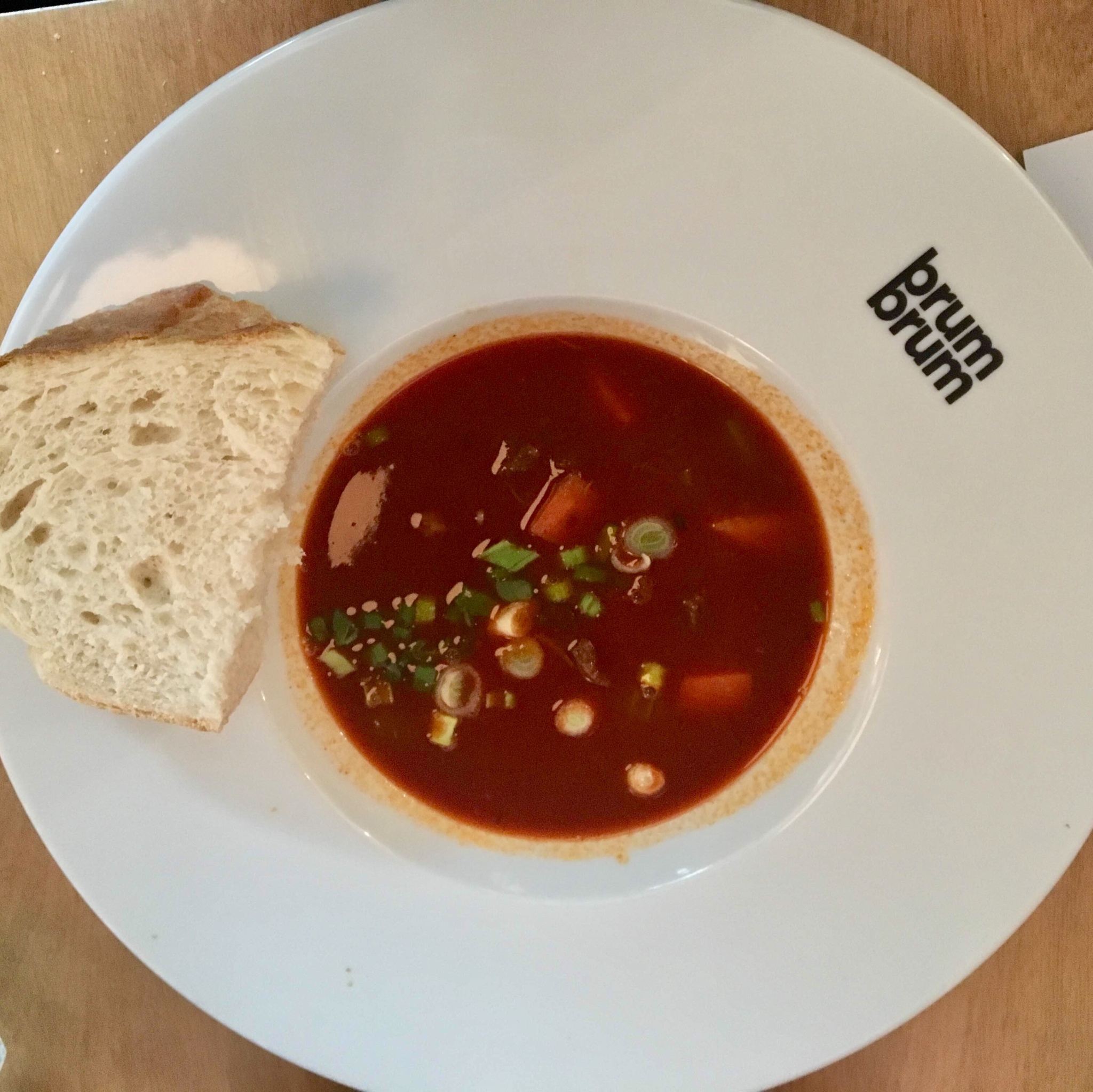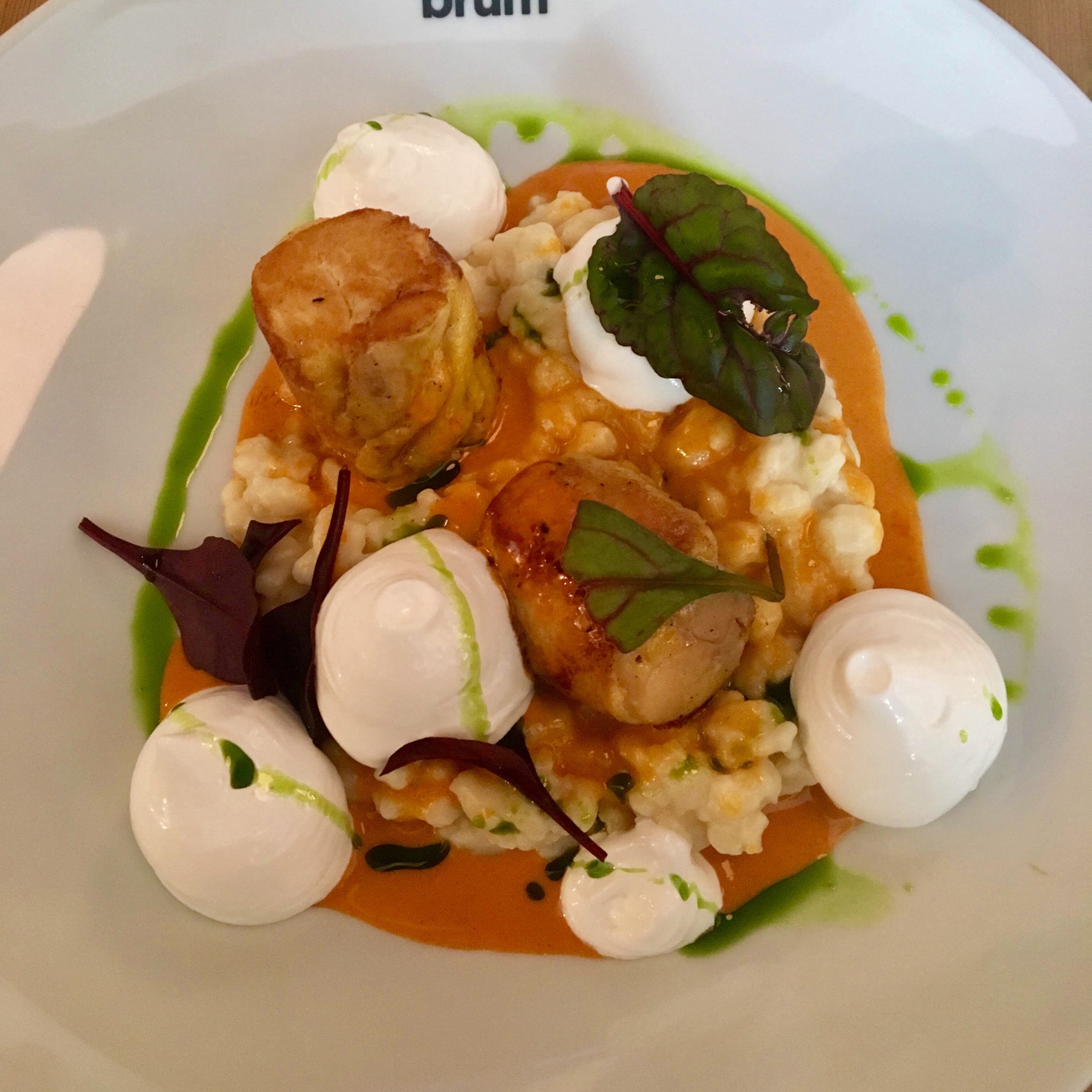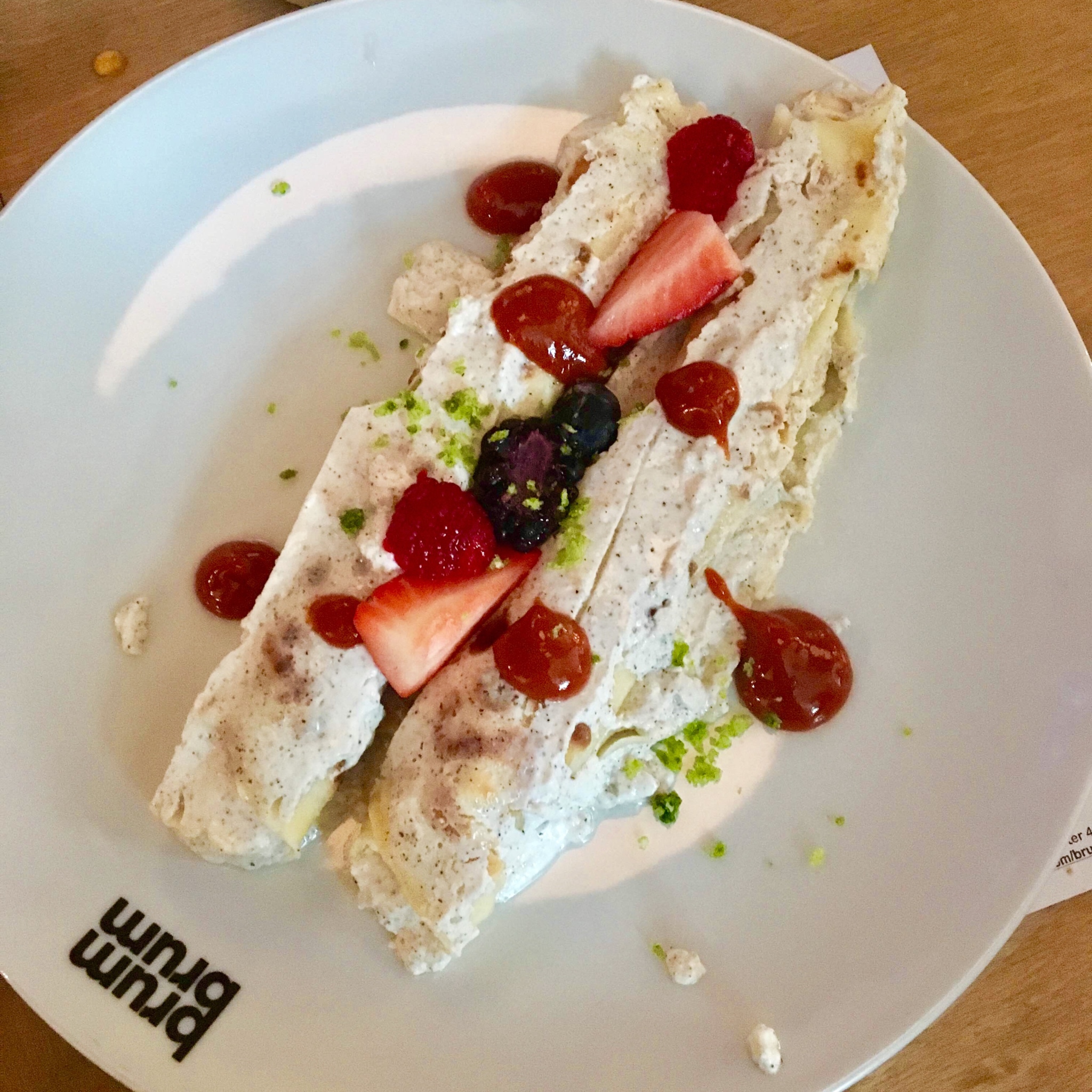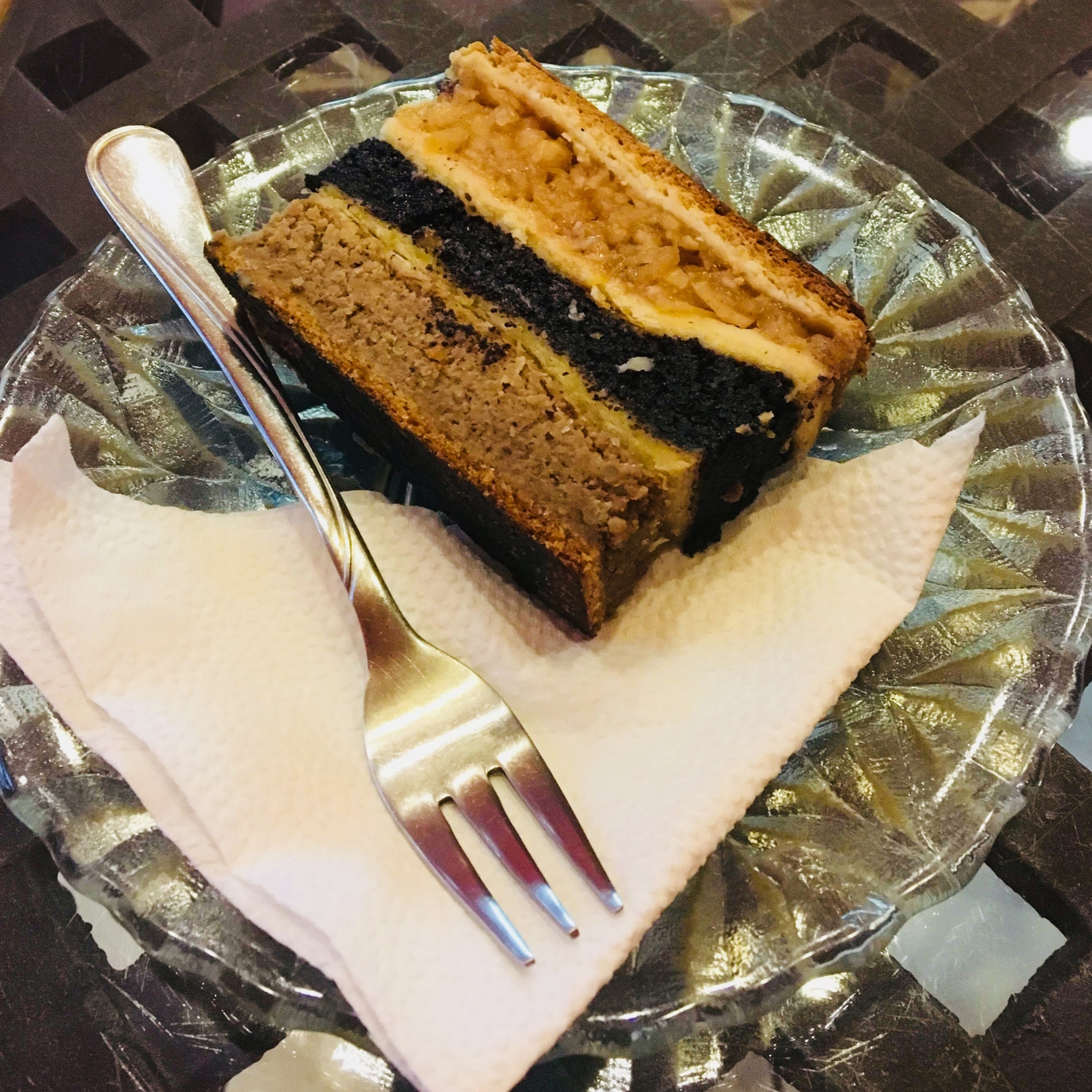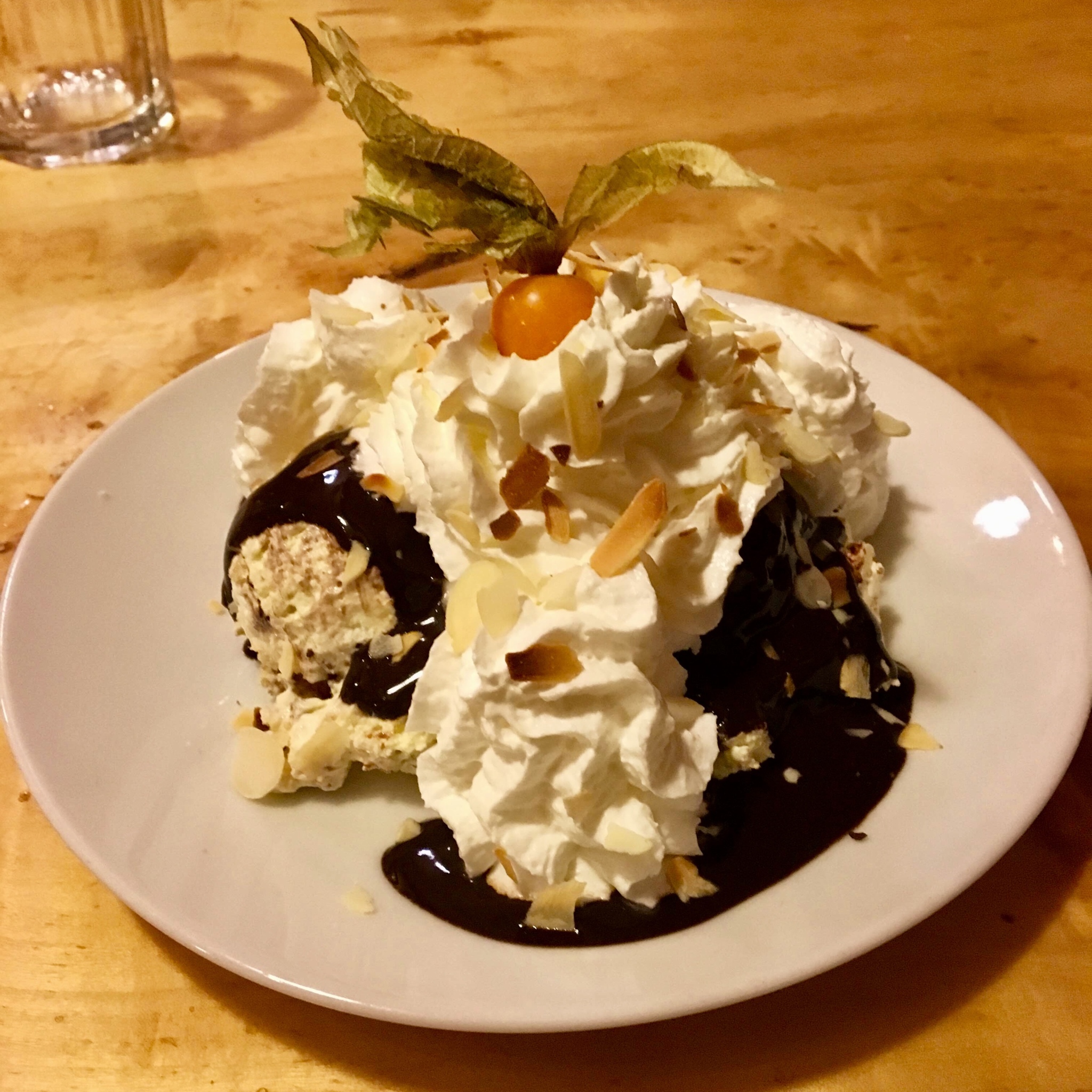Before I came to Budapest, I had some idea of going hiking, but not going to lie, I didn't have the highest of expectations. After all, Hungary isn't exactly known for its Alpine slopes (we're surrounded by the Buda
Hills). So when I decided to show up for a hike organized by
ELTE (after Google translating the event description, of course) I wasn't sure what to expect.
Well, I was in for a treat.
I went with two other BSM-ers (thankfully one of them spoke perfect Hungarian) in a group with zero other foreigners and a woodsy-looking guide. We took a Szentendre-bound train, got off after about an hour, and then took a bus deep into the countryside, amid rolling hills, gutted fields, and cottages ringed by colorful fences. When we finally got off at the entrance to the park, big cauldrons of goulash (foreshadowing: this will be a cultural experience) and a lovely view of the countryside awaited.
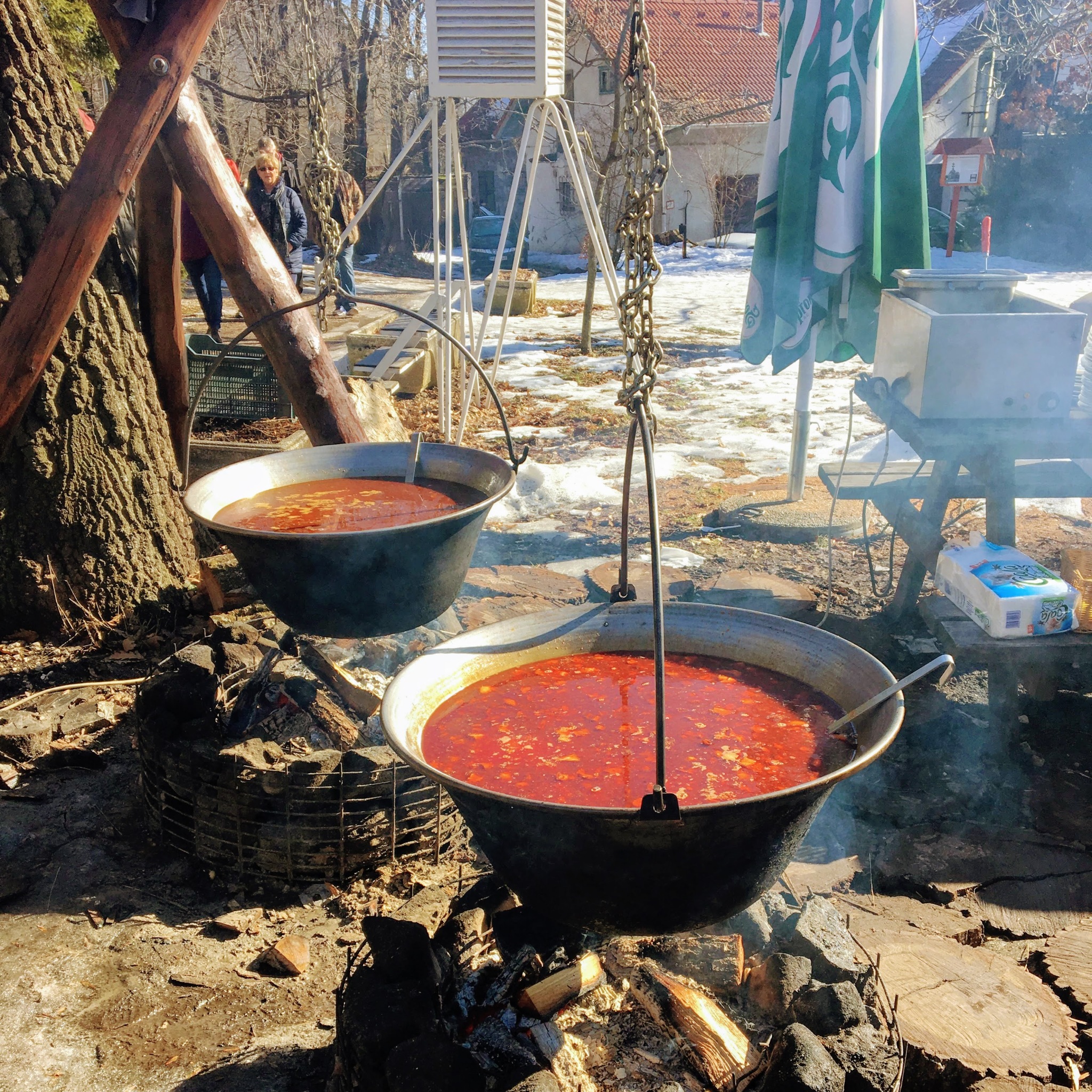 |
| What's better than a steaming cauldron of hot goulash on a cold day? Trick question, nothing. |
The first mile or two was a steep, icy downhill. The snow on the paths had completely compacted and turned to cold, hard ice, and within about ten or twenty minutes I had fallen three times, thorns had scraped up my palms, and my leggings were more mud than polyester. It's about then that the three of us realized just how metal Hungarians are. Several old ladies as well as a dad carrying a small child on his shoulders made it down the icy slopes faster than we did! (I henceforth referred to them as my "North Stars" because they were beacons of hope for the fact that, young and spry as I was,
I could do this hike. I just needed to follow them).
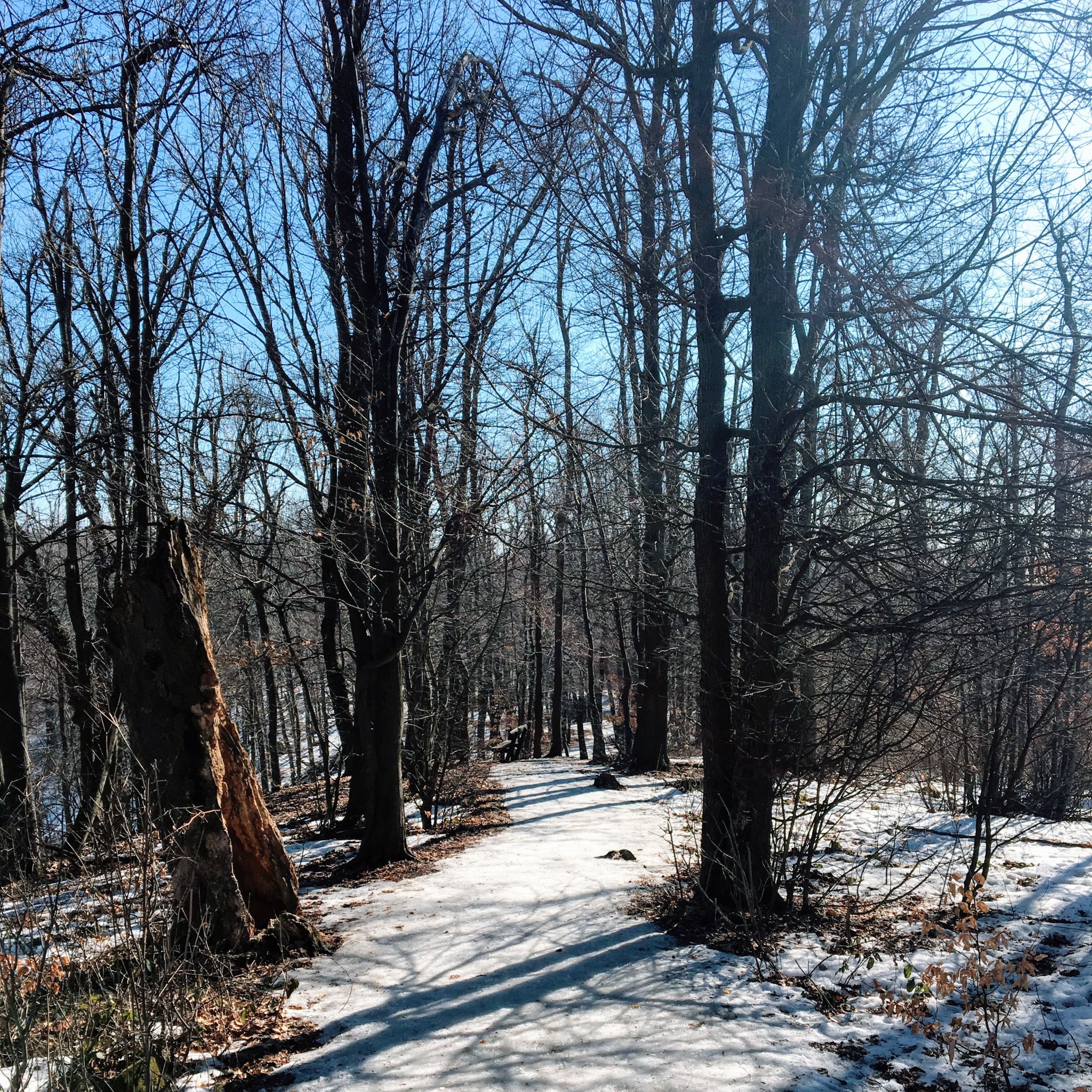 |
| Unfortunately I was too busy falling to take a picture of the steep part, but here's an icy part. That white stuff... not snow. |
After lunch, we hiked uphill some (thank goodness) and befriended a couple of English-speaking Hungarians (including two fellow math students studying at ELTE, an aspiring tour-guide entrepreneur, and a lovely master's student who studied abroad in Pohang, the same town in Korea my mom is from! We stopped at a breathtaking vista where we snapped some photos, then huddled around a campfire for snacks and brownies (made by the entrepreneur). It was here also that I was baptized with a new Hungarian name, courtesy of the master's student:
Kincso! (pronounced "keen-che")
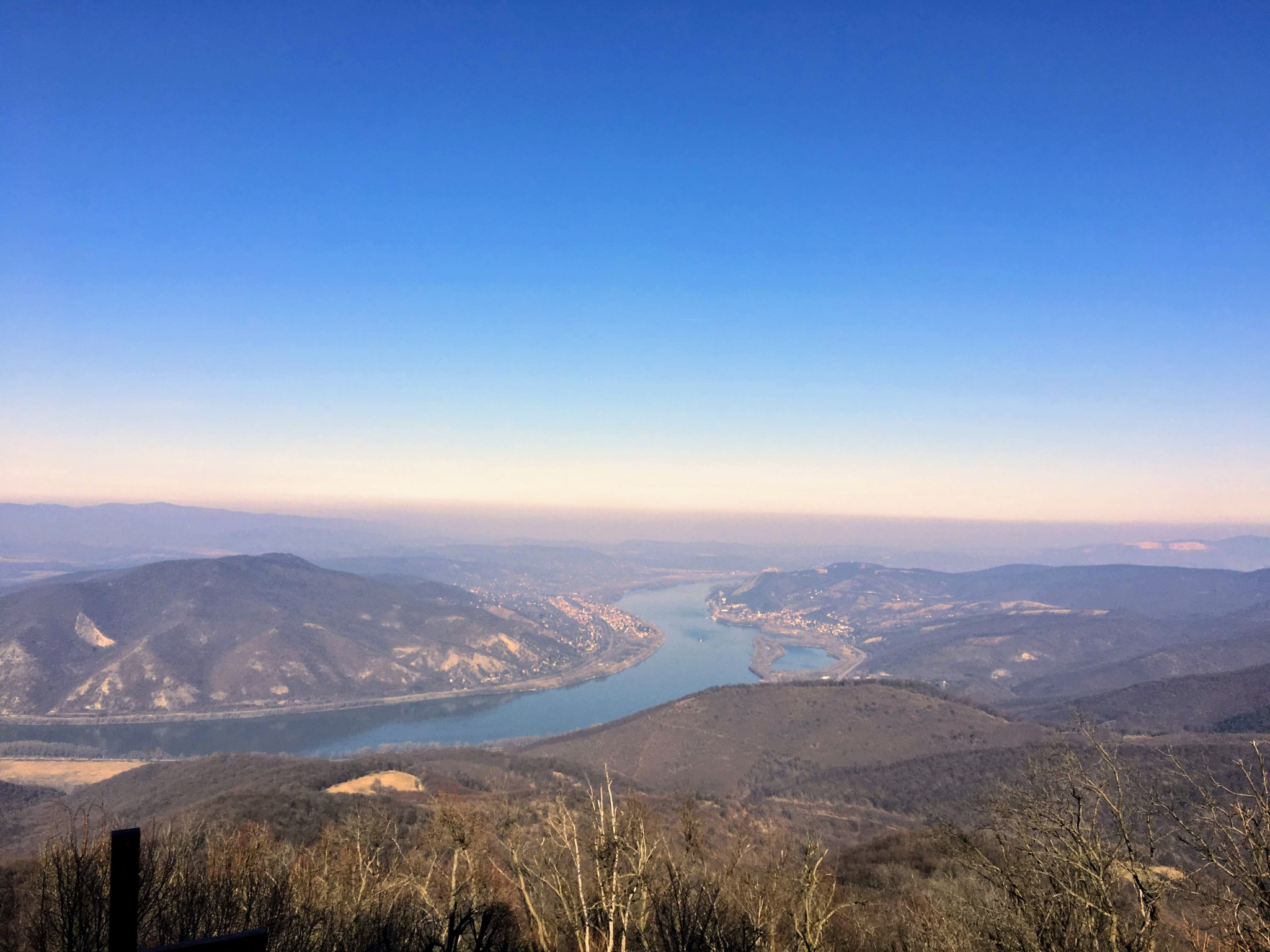 |
| The Vista-- and the curve of the Danube. |
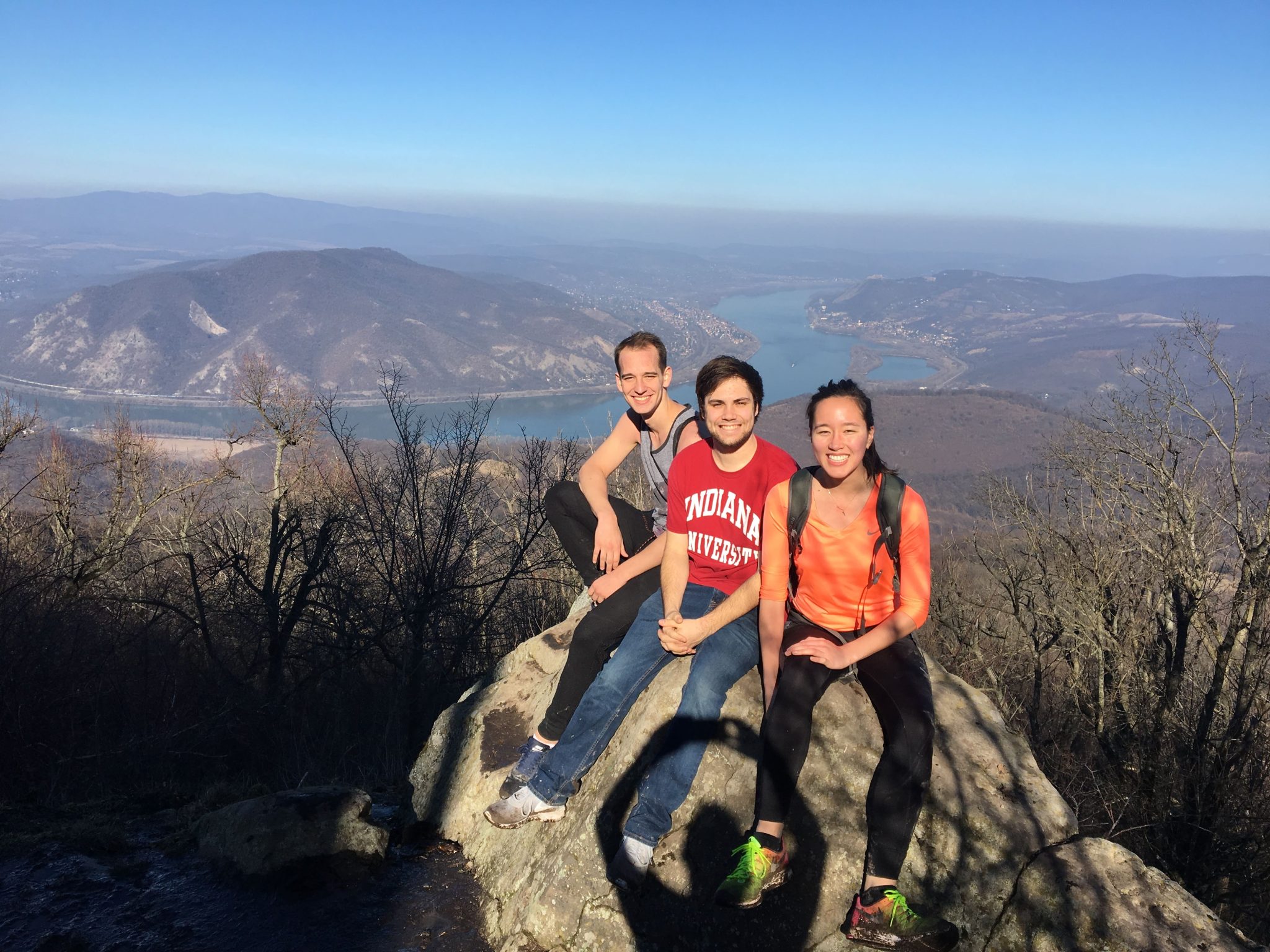 |
| I promise I wasn't here alone! |
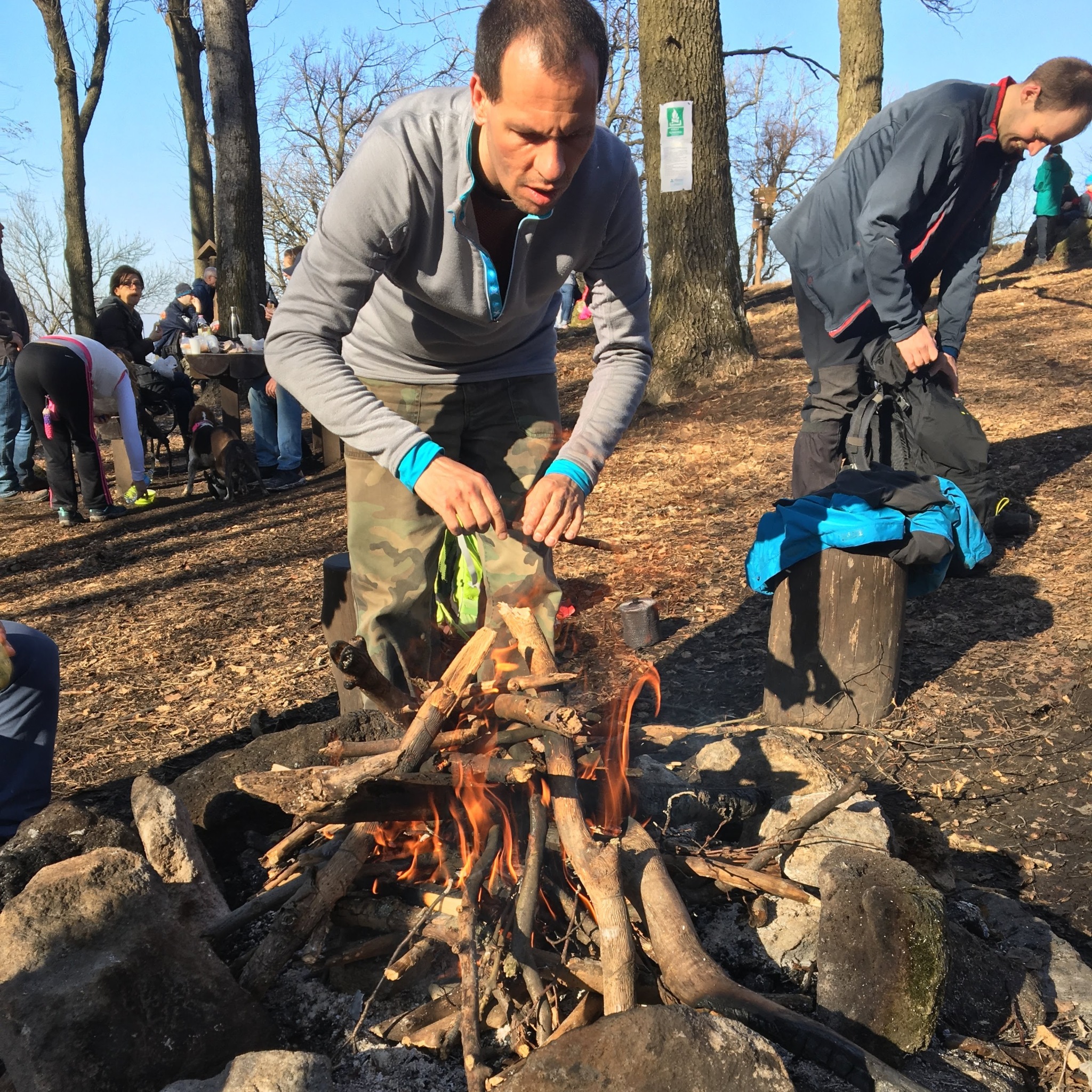 |
| A campfire-- where I was bestowed a Hungarian name. Fun fact: Hungarians celebrate "name days"-- like birthdays, where each day of the year is assigned a few Hungarian names and you celebrate when it's your name's day. Unfortunately my name days have already passed this year. |
We gathered after the campfire break and learned that the next part of the hike would be "slightly dangerous." I looked to my North Stars for comfort. How bad could it be?
As it turned out, we were going to hike along a literal rock ledge, scrambling past barely-marked trails and sheer drops. And also sometimes climbing down those steep drops. It was
awesome. Also terrifying. But if dad-with-kid and the old woman could do it,
so could I!
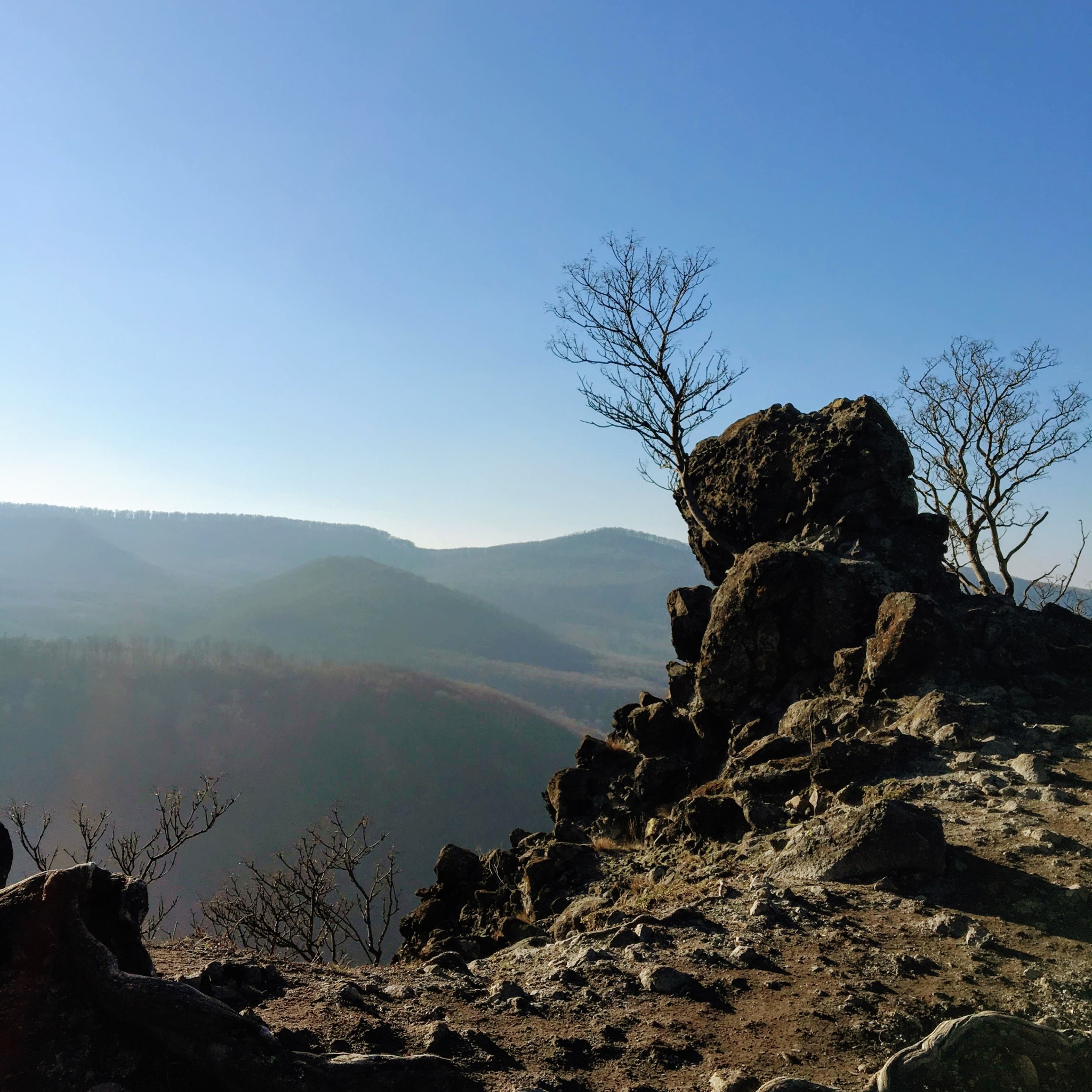 |
| A pleasant rock photo... |
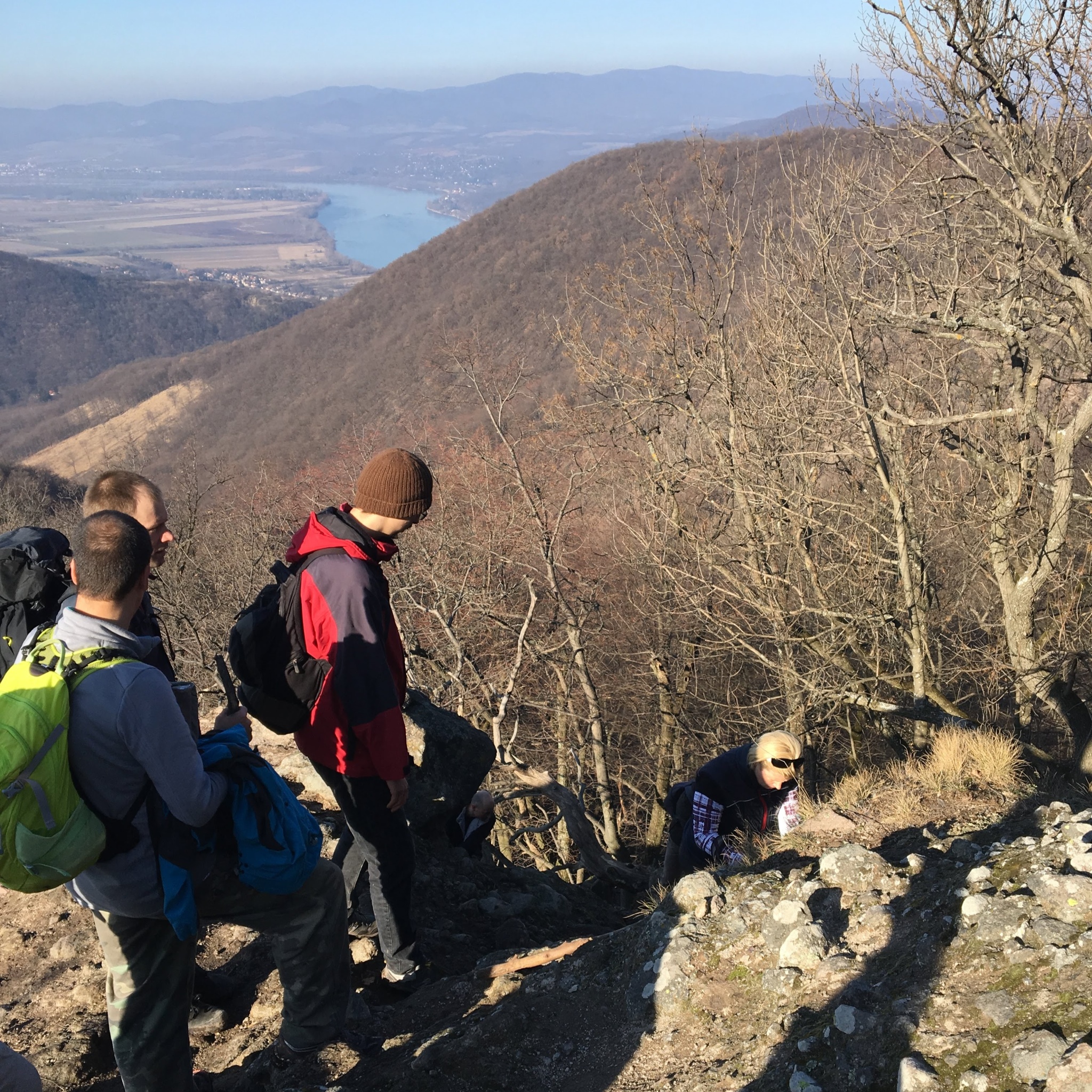 |
| A scary rock photo. I'm not sure how scary this looks in photos, but trust me, it was scary. |
We took another break at the bottom of all this rock scrambling near a small mountain stream, where we refilled our bottles and possibly were blessed by the house dedicated to the Virgin Mary and the "miraculous tree" that apparently was there.
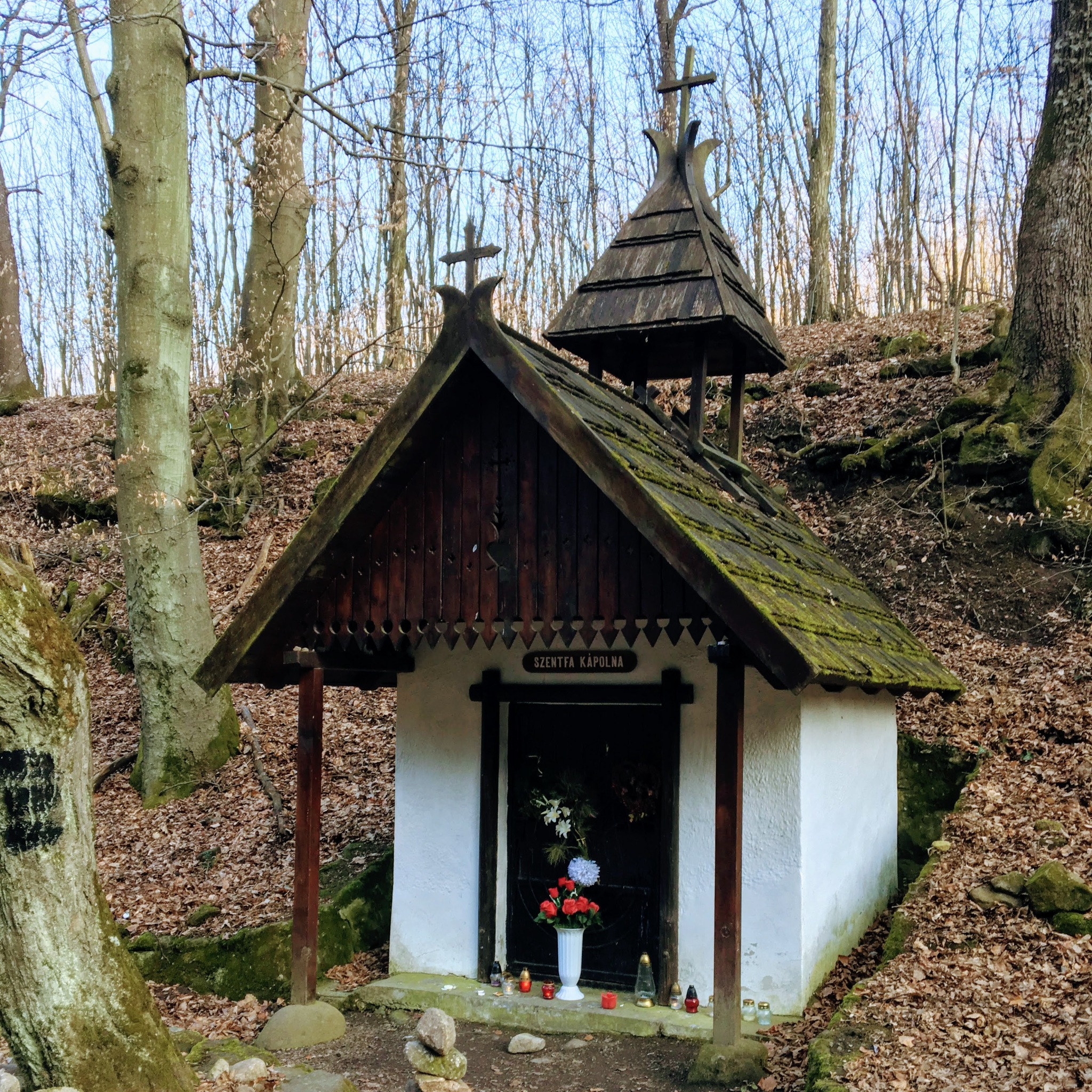 |
| Here's the little monument to the Virgin Mary. Not sure where this miracle tree is, though. |
A bunch of people (including both of my North Stars!) took a detour to the small town to head home before dark. The rest of us enterprising souls soldiered on to what was undoubtedly the coolest part of the hike: in a ravine, hiking
up a stream. When I say up, I mean that metal ladders and handrails were in place so that we could literally climb up the stream.
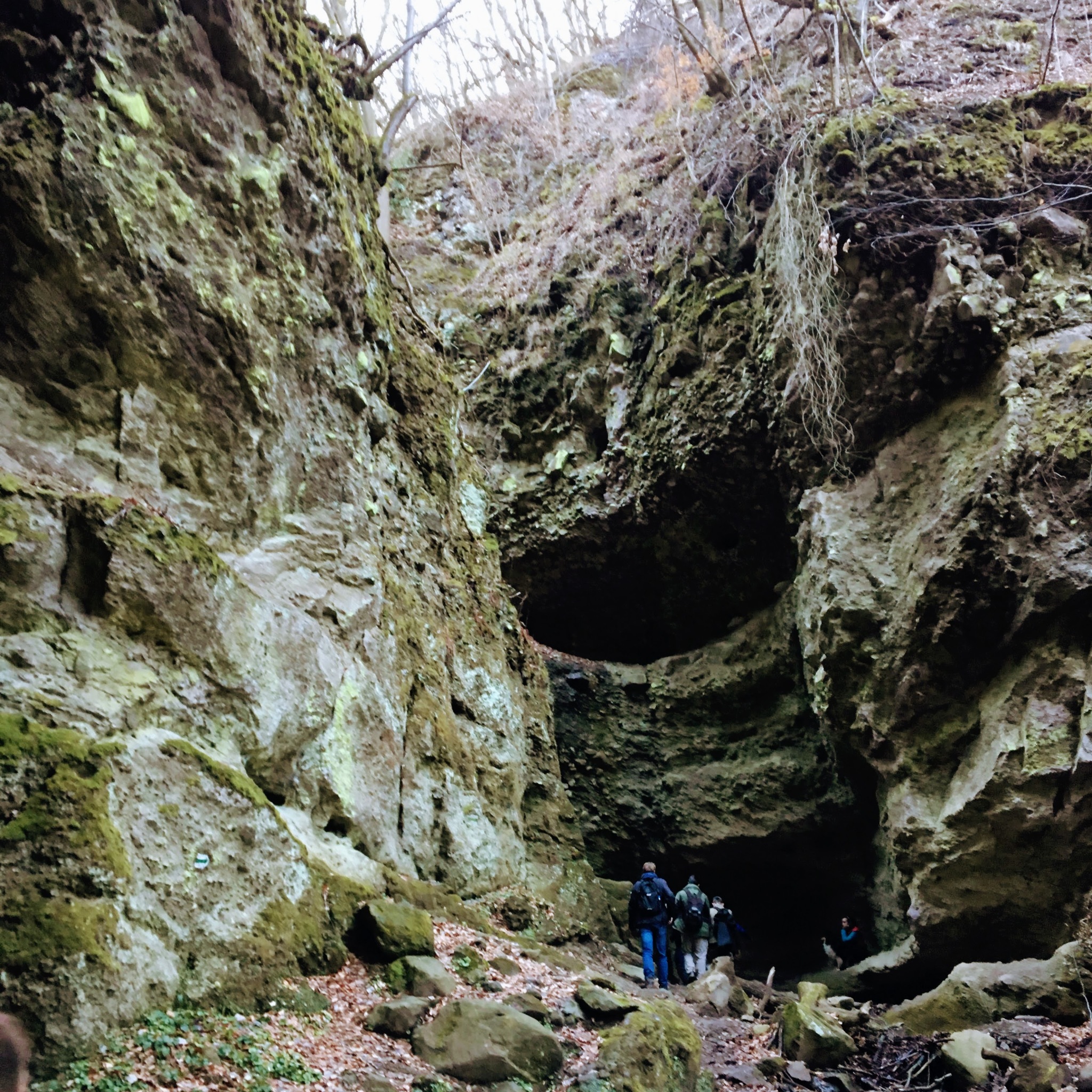 |
| The ravine, with some people for scale. |
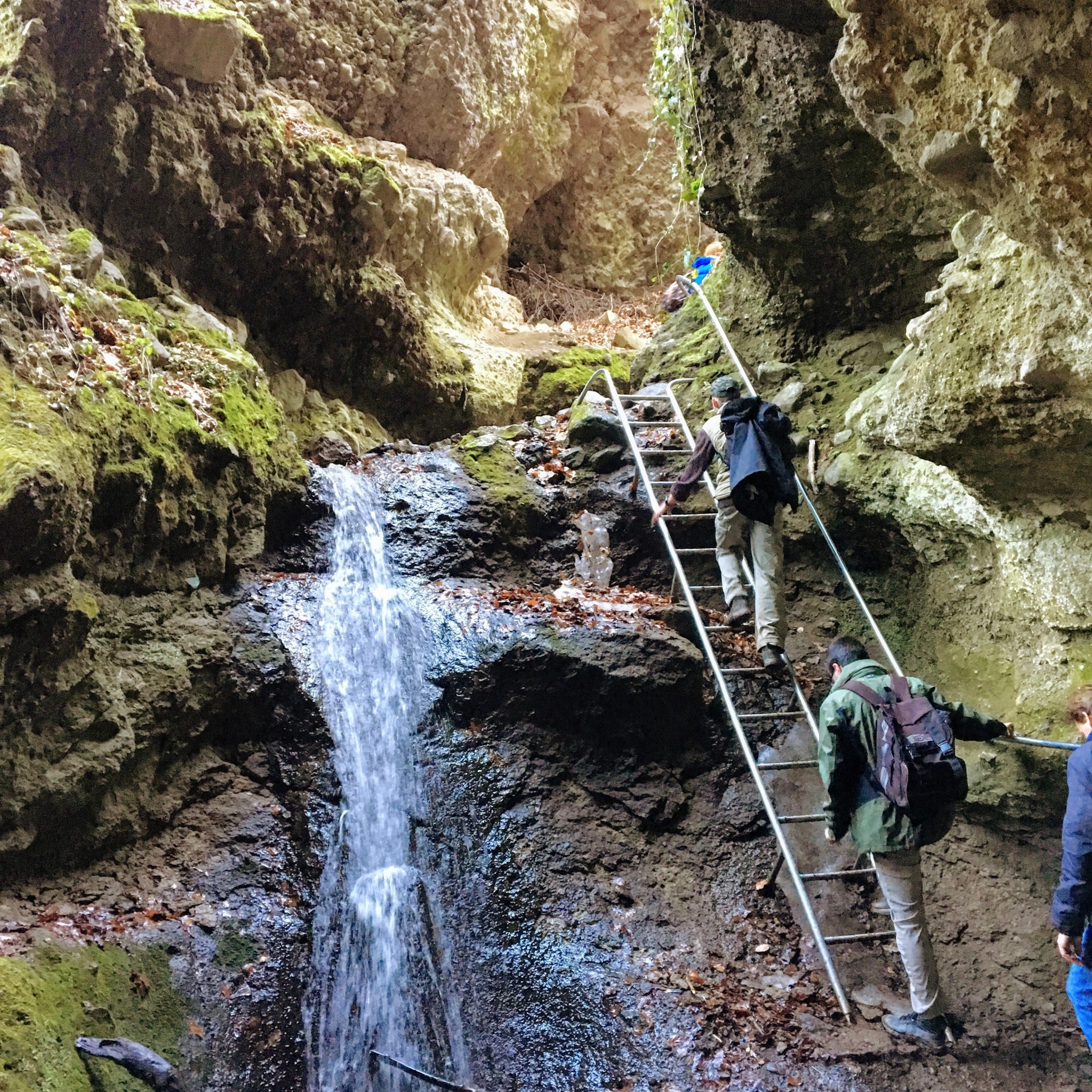 |
| I thought these ladders were wicked cool, but apparently in the recent past there were chains that you had to hold onto to climb? |
My shoes got impossibly muddy and doused in ice-cold mountain water... multiple times... but the ladders were incredibly cool and like nothing I'd done before.
After traversing the ravine (wow sounds intense) we had about a mile of uphill before we ended up in the same place we started, where we could take a bus back to the train station and end up back in Budapest. Right before my trusty iPhone died at 37% in the cold (thanks Apple), I managed to snap this sunset photo:
After about ten miles of hiking that day, chilled to the bone with our shoes nice and damp, we sipped on mulled wine while waiting for the rickety bus, where the bus driver would take our forints one-by-one, give us change for the journey, and take us back to civilization.










